We had never visited Saint-Saturnin-lès-Apt before the autumn of 2023, despite having heard about it numerous times.
When we finally made the trip, we were absolutely astonished by what we discovered.
The village, perched on the southern slopes of the Luberon mountain range, surprised us with its breathtaking and dramatic setting.
From a distance, the silhouette of the village is dominated by the castle rock, crowned by the impressive, large castral chapel.
To the left, on a hilltop, stands the picturesque windmill, adding to the village's enchanting skyline.
Strolling through the narrow, historic streets of Saint-Saturnin-lès-Apt was a delightful experience.
We were captivated by the beautiful portals of the 17th and 18th centuries, each one a testament to the village’s rich architectural heritage.
Every corner revealed something new, from ornate doors to hidden passages, making our exploration both exciting and rewarding.
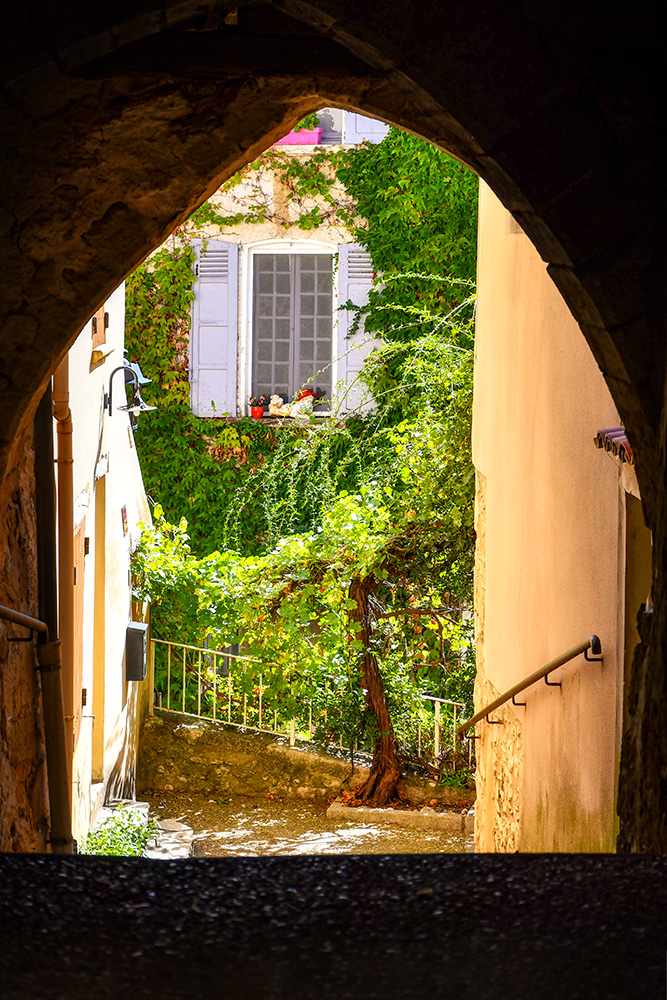
The old village of Saint-Saturnin-lès-Apt © French Moments
Our visit to Saint-Saturnin-lès-Apt left us with lasting memories and a deep appreciation for its unique charm and historical significance.
We hope to share some of that enchantment with you through our experiences and stories from this incredible village.
Watch this short video on the Luberon!
Plan your trip
- 🛏 Find the best accommodations in the Luberon on Booking.com
- 🚙 Rent a car in Aix-en-Provence or Marseille-Provence Airport
- 🙋♀️ Get the PASS CÔTE D'AZUR and take your pick from more than 100 amazing experiences!
- 🤩 Visit the beautiful Provençal region of Luberon
- 🚐 Join a 6-hour tour of Lourmarin, Bonnieux, Roussillon, and Gordes by air-conditioned minibus
- 🚘 Discover Provence in a 2CV. Stroll along exceptional roads and enjoy a piece of Luberon all to yourself!
- 🥗 Experience a black truffle hunting tour in a Luberon plantation
- 📚 Read the DK Eyewitness Provence and the Côte d’Azur Travel Guide
- 🗺️ Download the map of the village.
- 🚗 There are several parking spaces near the entrance to the old village. For example, try the car park of Rue du Docteur R. Lassave.
Saint-Saturnin-lès-Apt: A Bit of History
Let’s step back in time as we recall the storied past of Saint-Saturnin-lès-Apt.
The old village of Aniane
The Gallic tribes gathered around 330 BC at the foot of the Perréal hill south of the current village.
There, they established the village of Aniane, which was later burned by the Saracens in 869.
At this time, refugees from Aniane came to build a fortress and houses on the castle rock of Saint-Saturnin.
Sanctus Saturninus
The village is mentioned in the 10th century under the name Sanctus Saturninus.
The town was named Saint Savournin in 1607 and then Saint Saturnin in 1770.
A castrum was established on the rock in 1009, and the first village enclosure was built in the 11th century.

The view of the village from the Castrum Rock © French Moments
Abandonment of the Site
The castle, more or less abandoned since the 15th century, was finally destroyed during the Wars of Religion.
From the 17th century onwards, the old perched village was abandoned.
The houses gradually collapsed, and only the castle’s chapel remained intact.
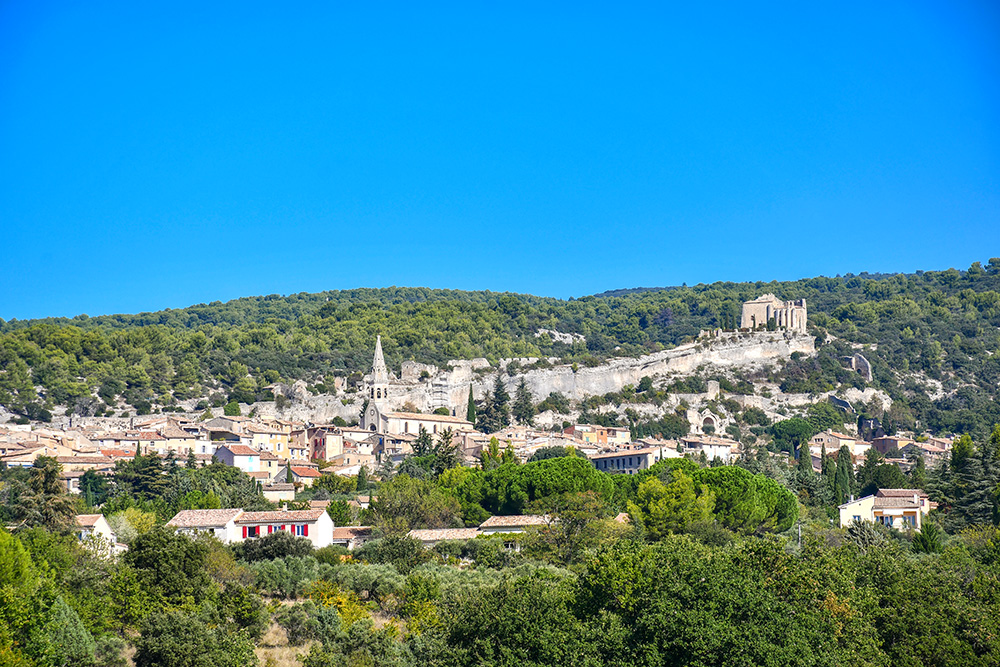
Saint-Saturnin-lès-Apt © French Moments
The Discovery Guide of Saint-Saturnin-lès-Apt
Here's some tourist information to help you explore the Provencal village.
🎦 Check out my guided walk on YouTube to explore Saint-Saturnin-lès-Apt with me:
Understanding the Village
Saint-Saturnin faces south on the hillside.
The village is situated at an altitude of 400 metres, but the commune's territory reaches up to 1,000 metres in the mountains.
Saint-Saturnin is a commune of nearly 3,000 inhabitants with 27 hamlets scattered across the surrounding countryside.
In the plain south of the village, there are orchards of cherry trees and olive trees, as well as fields of lavender.
The vineyards of the commune produce AOC Ventoux wines.
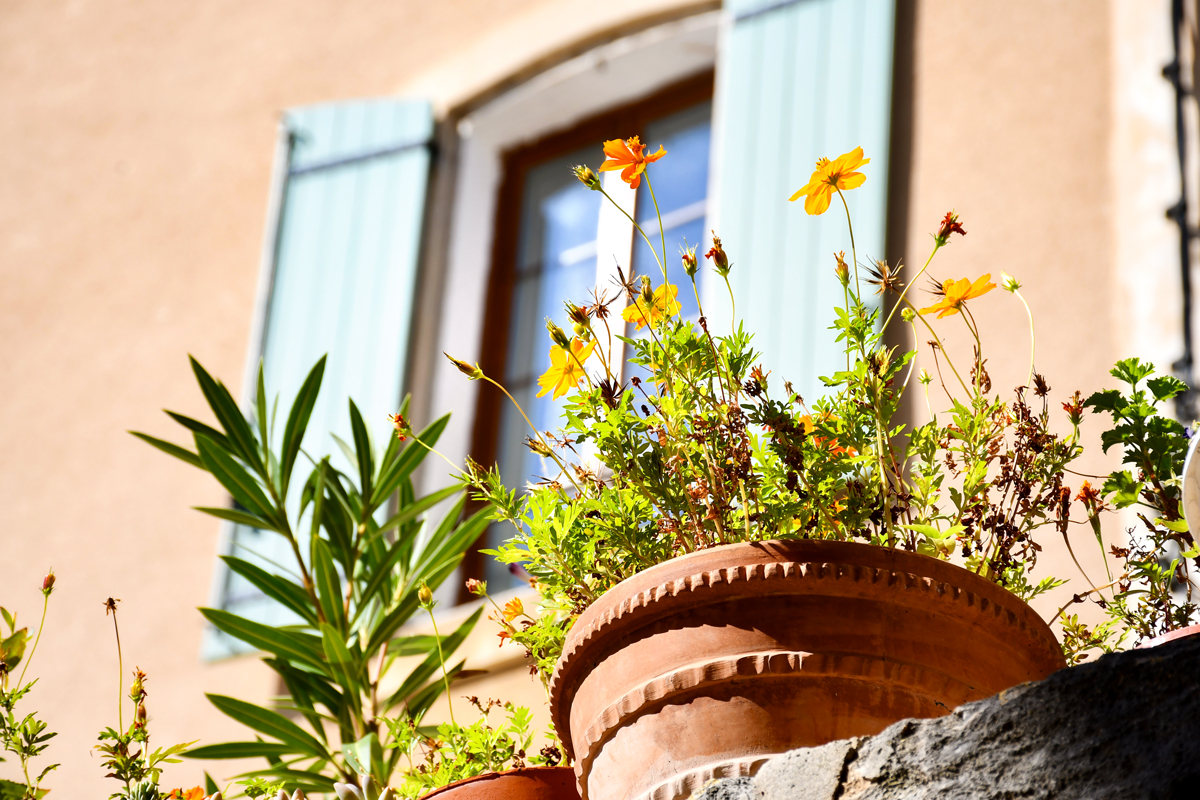
Saint-Saturnin-lès-Apt © French Moments
The Village Walk of Saint-Saturnin-lès-Apt
We'll visit the centre of the old village, then climb up to the castle chapel before descending via the mills.
Let's begin our exploration of Saint-Saturnin-lès-Apt at the Place Gambetta.
Place Gambetta and Joseph Talon
This square is lined with restaurants, cafés, and shops.
The Provençal open-air market takes place here every Tuesday morning.
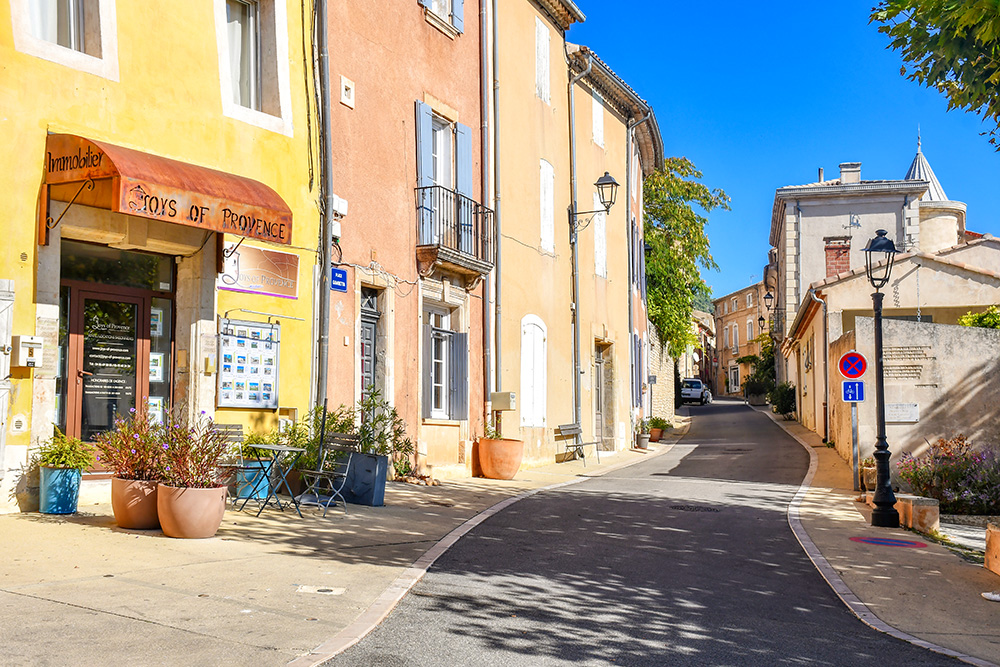
Place Gambetta, Saint-Saturnin © French Moments
Since 1986, Joseph Talon has had his statue in the Place Gambetta.
Joseph Talon, an illiterate farmer from Saint-Saturnin, is considered the promoter, if not the inventor, of truffle cultivation.
Born around 1755, he kept his secret during the revolutionary period and only revealed it around 1810.
Joseph Talon, known as the father of modern truffle cultivation, had a simple principle:
"If you want to harvest truffles, plant acorns."
He proved this maxim to be true as early as 1810 by using acorns from truffle oaks.
Many followers throughout the 19th century planted white or green oaks, as well as ash, hornbeam, or lime trees, all of which live in symbiosis with the truffle.
By 1868, Vaucluse was harvesting 380 tonnes of truffles from the Luberon massif, the Vaucluse mountains, and Mont Ventoux.
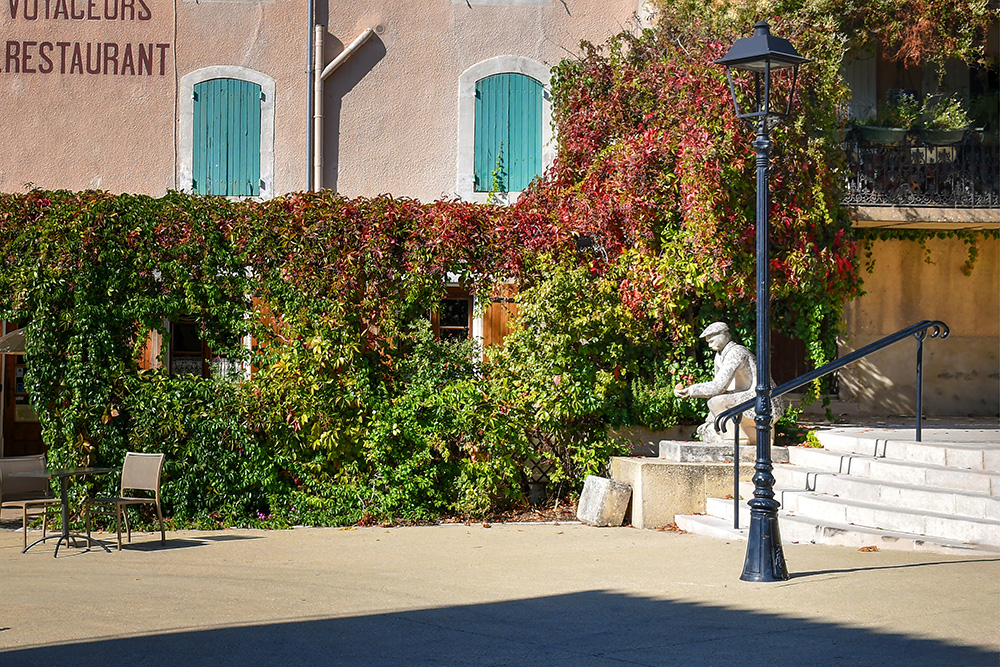
The statue of Joseph Talon in Place Gambetta © French Moments
Let's take the Rue Albert Trouchet to reach the Place de la Fraternité. Then, turn right and walk on Rue de la République.
Rue de la République
The Rue de la République is the high street of Saint-Saturnin. It is lined with other remarkable houses.
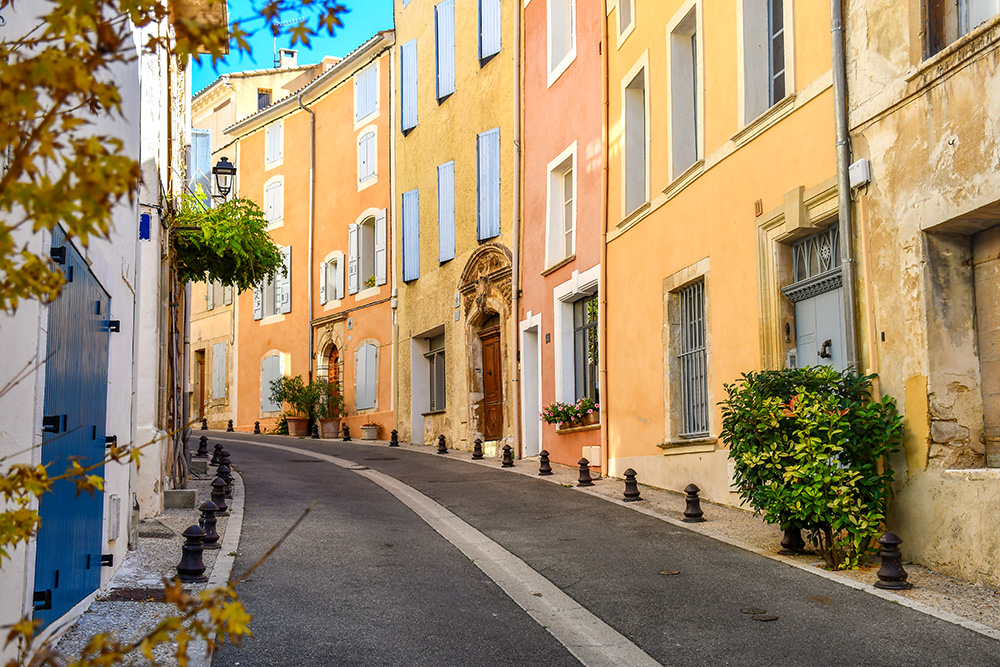
Rue de la République © French Moments
You must pay attention to the doors, panels, columns, and balconies of houses dating back to the 17th and 18th centuries.
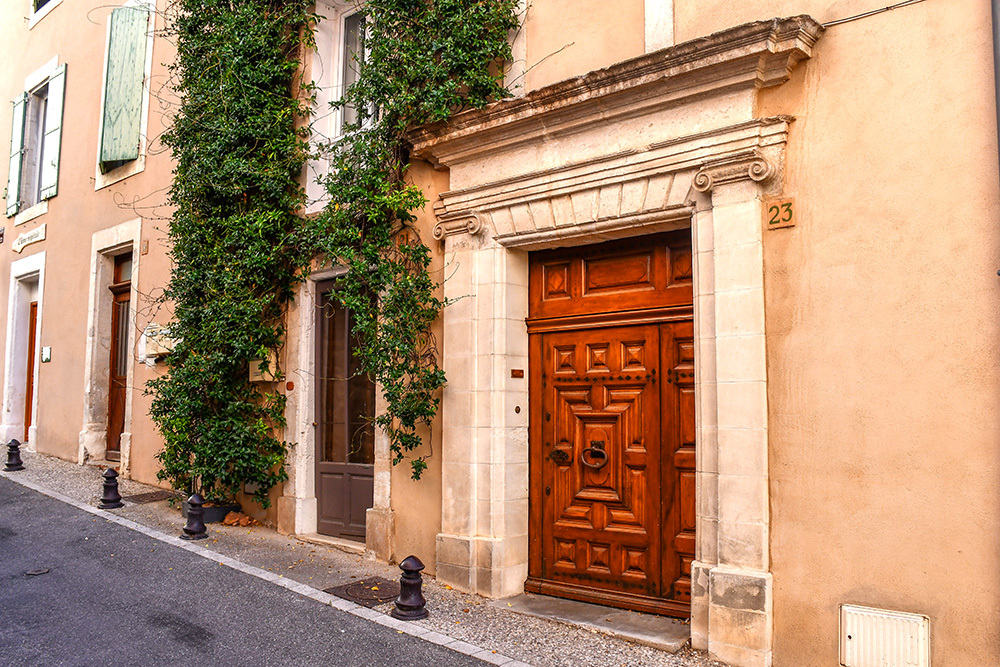
Rue de la République © French Moments
You will notice that almost all the luxurious entrances are on the southern side of the street.
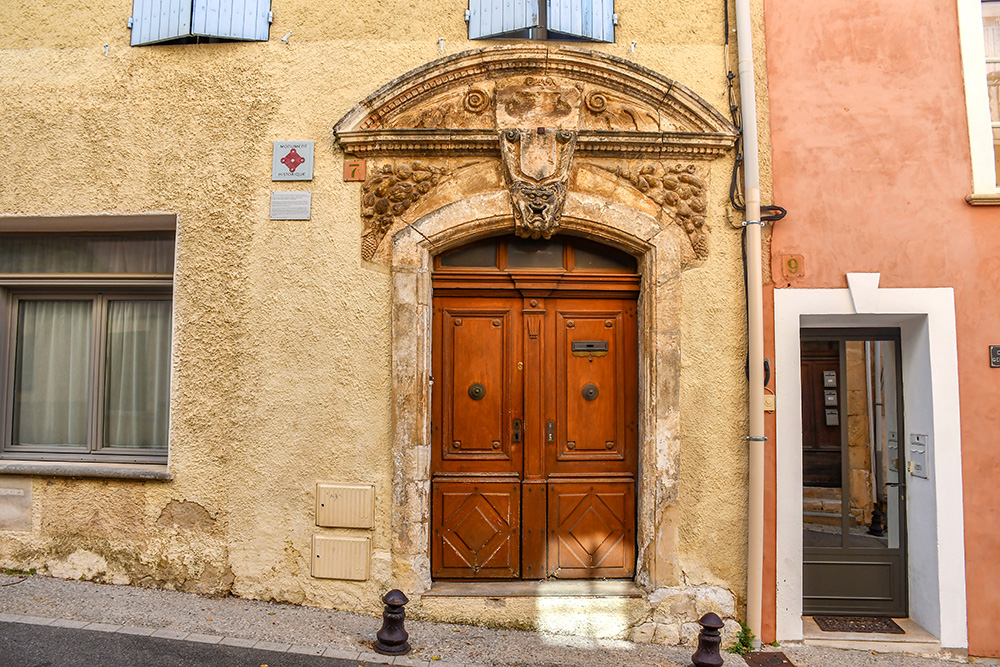
Elegant door, Rue de la République © French Moments
Indeed, the wealthiest families settled in locations that allowed them to enjoy the sun and the view.
Maison aux Atlantes
Don't miss the Maison aux Atlantes.
It was built in the 18th century by Jacques Ripert, a wealthy bourgeois from the region.
In 1764, his son Mathieu adorned it with a balcony supported by caryatids.
These are two sculptures supporting the balcony cornice with their heads.

Maison aux Atlantes © French Moments
We will visit the church a bit later, but for now, let's retrace our steps because I want to show you a charming corner of the old village. For this, we need to take the Rue du Pontin.
Rue du Pontin and the vaulted passages
Exploring the neighbourhood of the Rue du Pontin reveals a quiet and ancient aspect of the village.
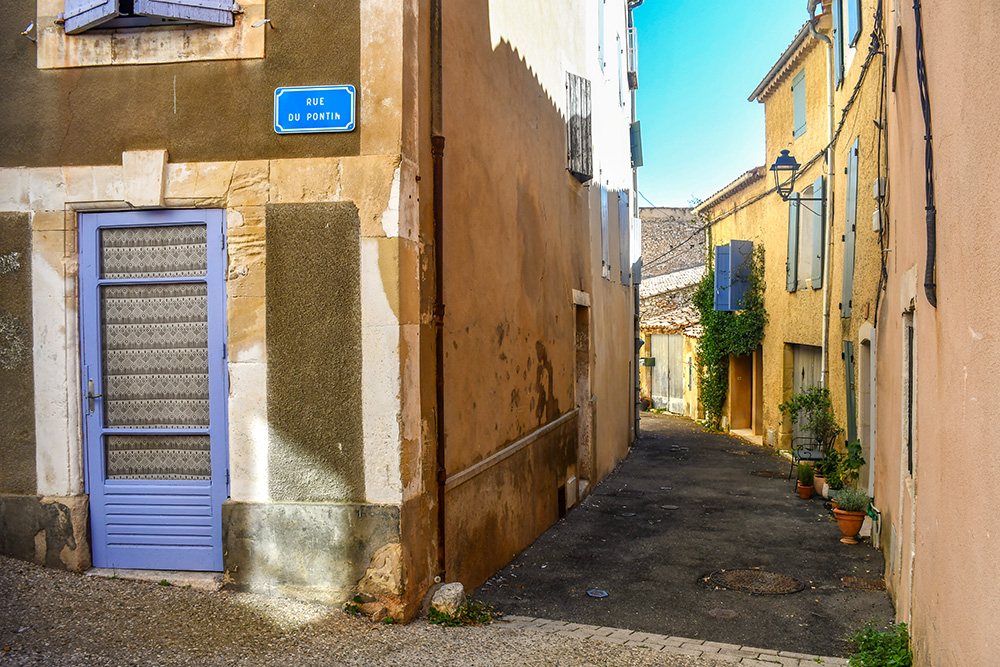
Rue du Pontin © French Moments
There are beautiful stone house facades and long vaulted passages connecting to adjacent streets.
Inside the city walls, every space was utilised, and houses had several floors.
To save even more space, passages were built under the buildings when the ground floor allowed it.
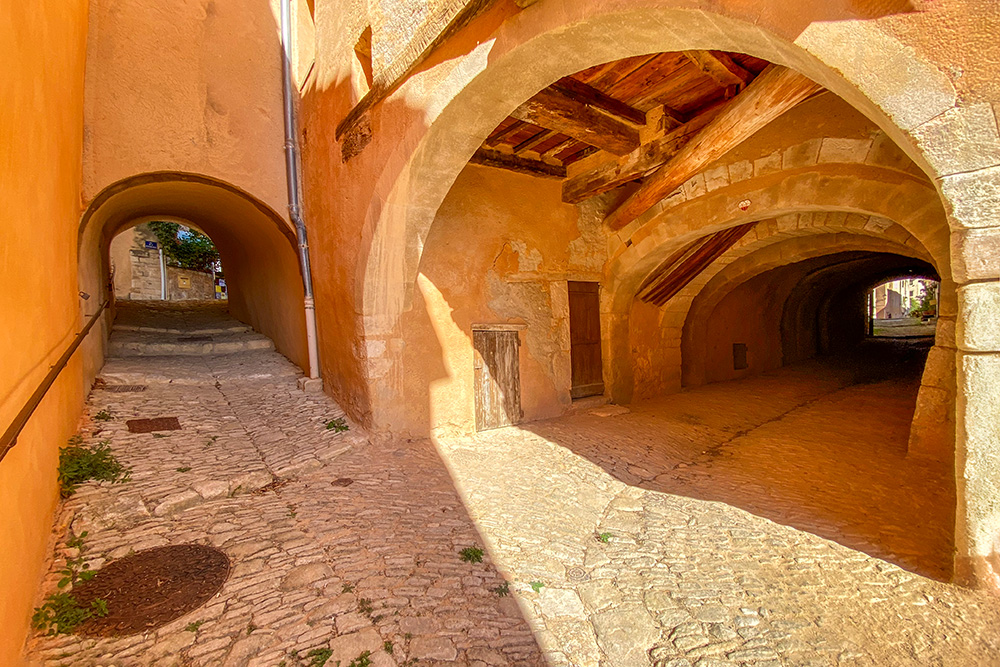
Vaulted Passages in Saint-Saturnin-lès-Apt © French Moments
These passages helped to save space and improve circulation.
One vaulted passage leads to the Rue de la République and another one to the Place de la Mairie.
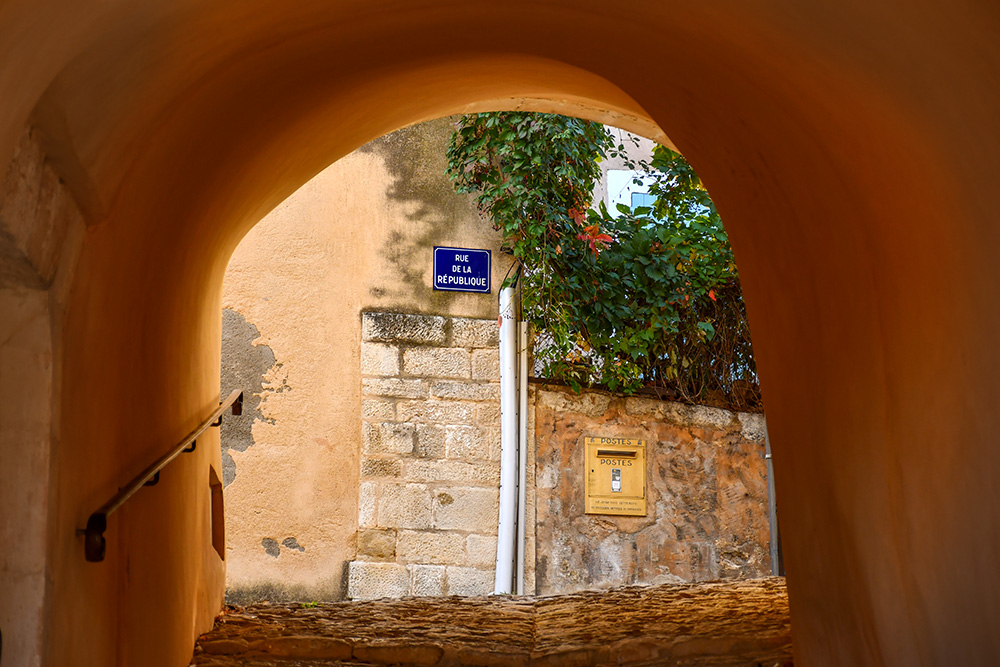
Vaulted Passage leading to the Rue de la République © French Moments
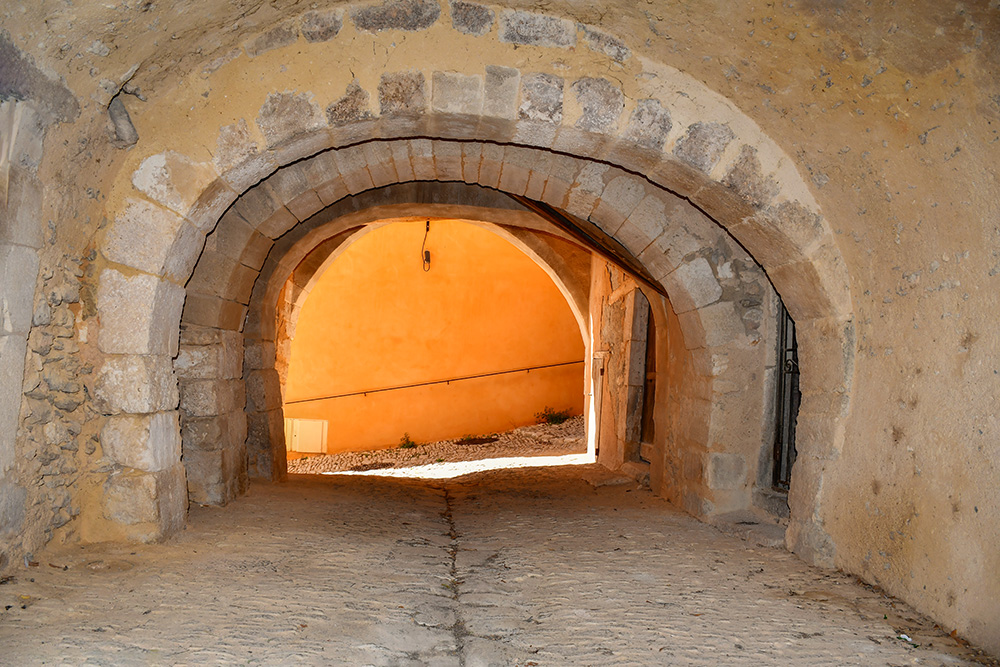
Another vaulted passage from Place de la Mairie to Rue Pontin © French Moments
Continue the street which leads us to the Rue Blanche Gaillard. Then, turn left to reach a square.
Place de l'Hôtel-Dieu
The Place de l'Hôtel-Dieu is a lovely shaded square that borders the chapel of the old hospice.
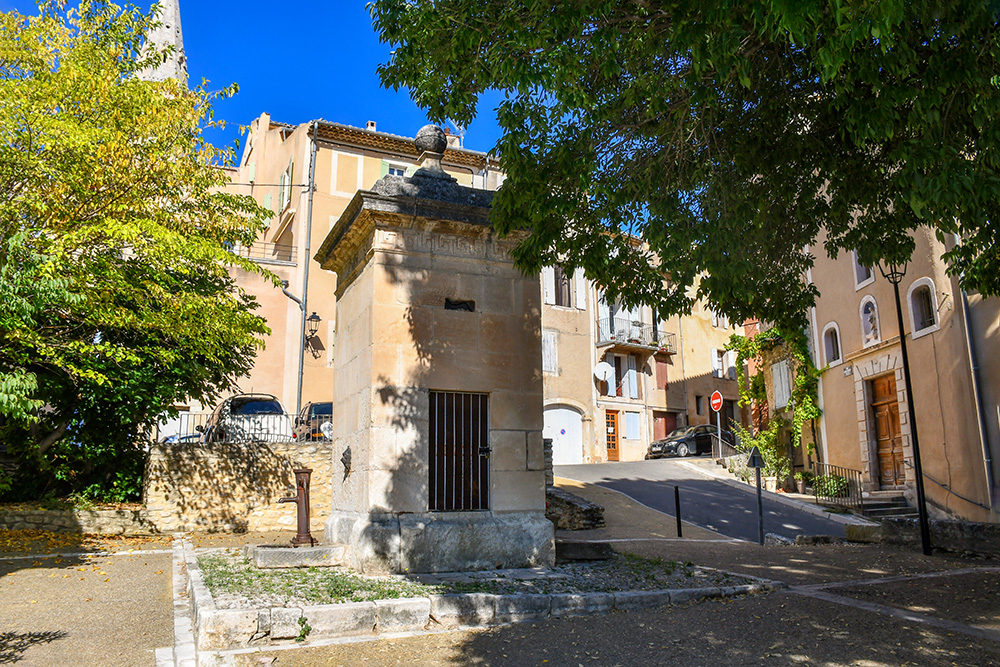
Place de l'Hôtel-Dieu and the cistern © French Moments
In its centre is the Hospice cistern, dating back to 1835.
It is a reservoir fountain.
Under this imposing column is a large cistern with a capacity of 600 m3, fed by springs.
It was intended to store water before the dry season.
The fountain was equipped with a hand pump in 1839.
We will now head to the church via the Rue Abbé Pierre Mathieu.
Matheron Fountain
On your way to the Place de la Mairie, you will pass by the Matheron fountain with its beautiful 18th-century sculpted pediment.
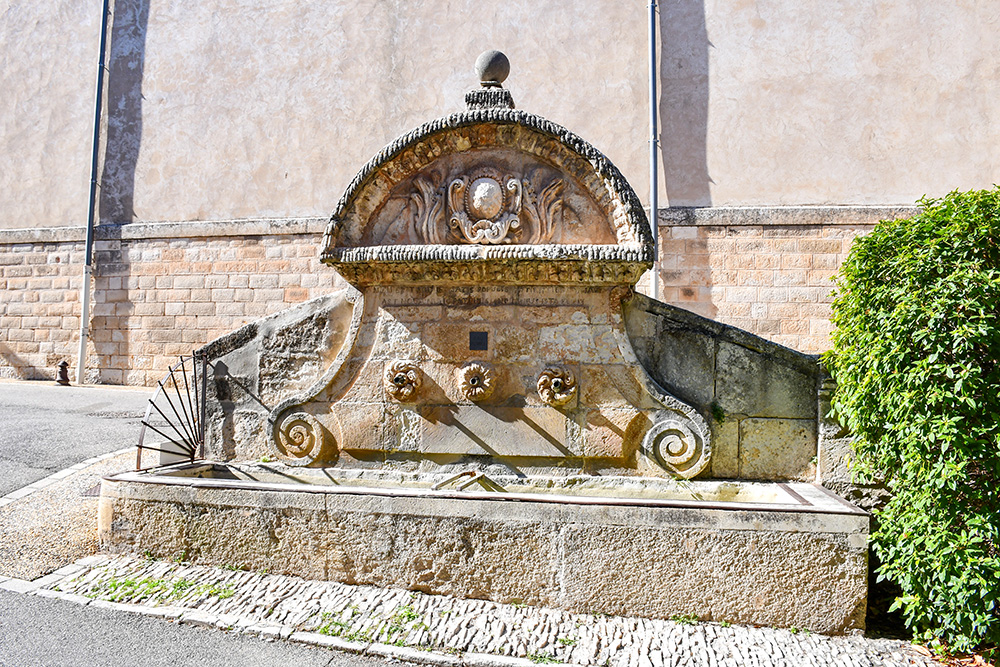
Matheron fountain © French Moments
Enter the Place de la Mairie.
Saint-Etienne Church
The Place de la Mairie is bordered by Saint-Saturnin's town hall and the Saint-Etienne church.
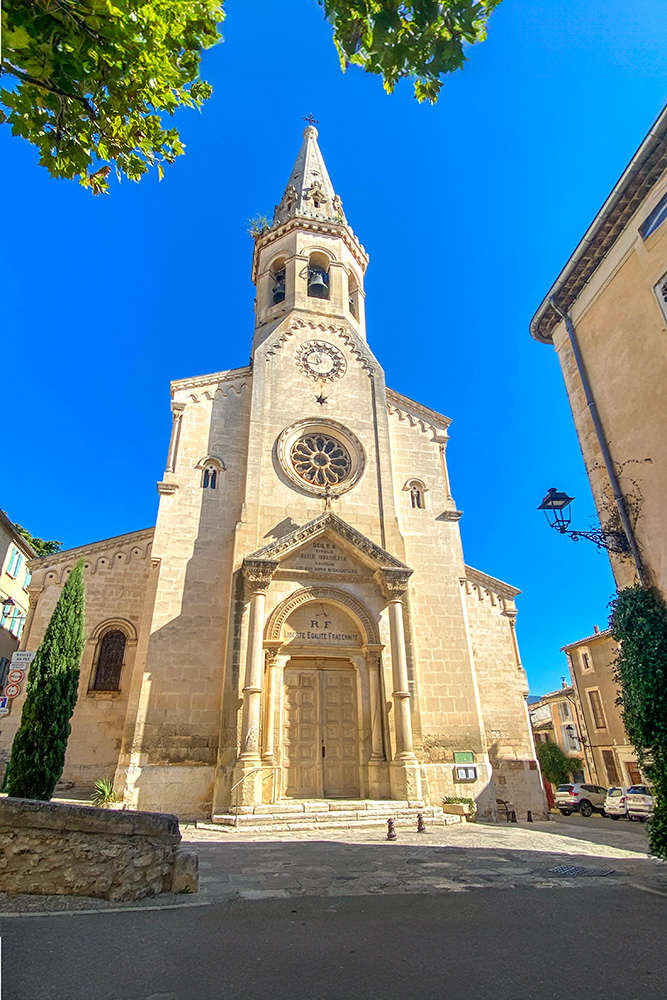
Saint-Etienne Church © French Moments
The current church was built on the site of an old Romanesque church from the 11th century.
The church was included in the ramparts in 1360 and underwent various enlargements from the 14th to the 17th centuries.
Under the guidance of Abbé Grand, the town demolished the medieval church and its crypt to build the current church in a neo-Romanesque style.
This one was much larger than the previous one and was consecrated in 1862.
The Republican Inscriptions
The inscriptions "R.F." (République Française) and "Liberté-Égalité-Fraternité" painted on the pediment date back to the secularisation of the State under the Third Republic.
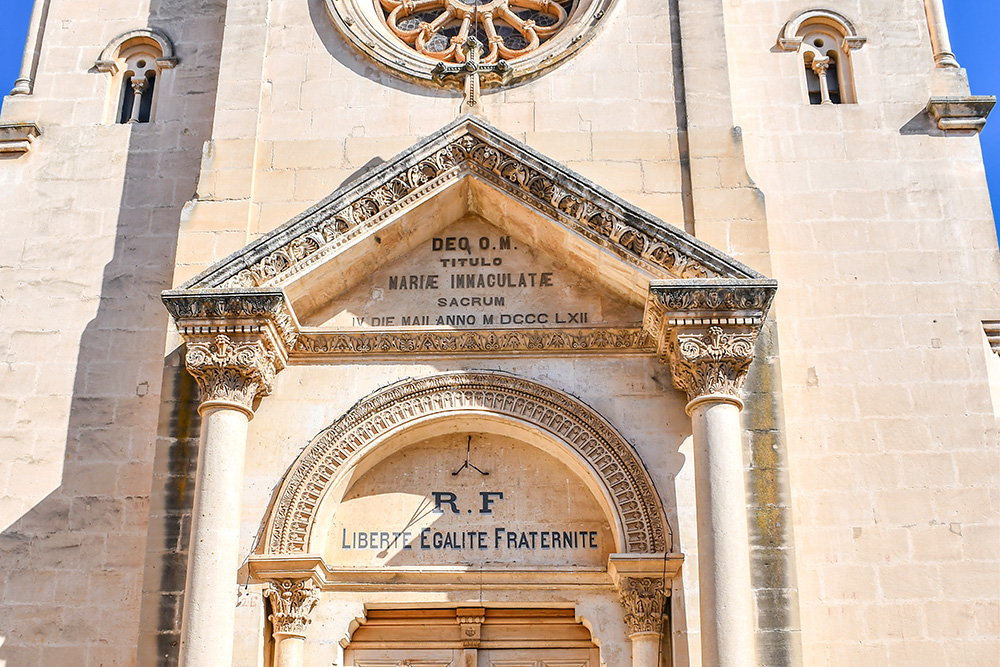
The Republican inscriptions on the Saint-Etienne Church © French Moments
These inscriptions were painted in 1906 after the inventory of public buildings.
According to my research, there are 119 churches in France with a republican inscription, making the church of Saint-Saturnin quite a rare case.
Follow the Rue Pasteur.
Rue Pasteur and 18th-Century Houses
On the Rue Pasteur, you can spot some lovely 18th-century doors.

Rue Pasteur © French Moments
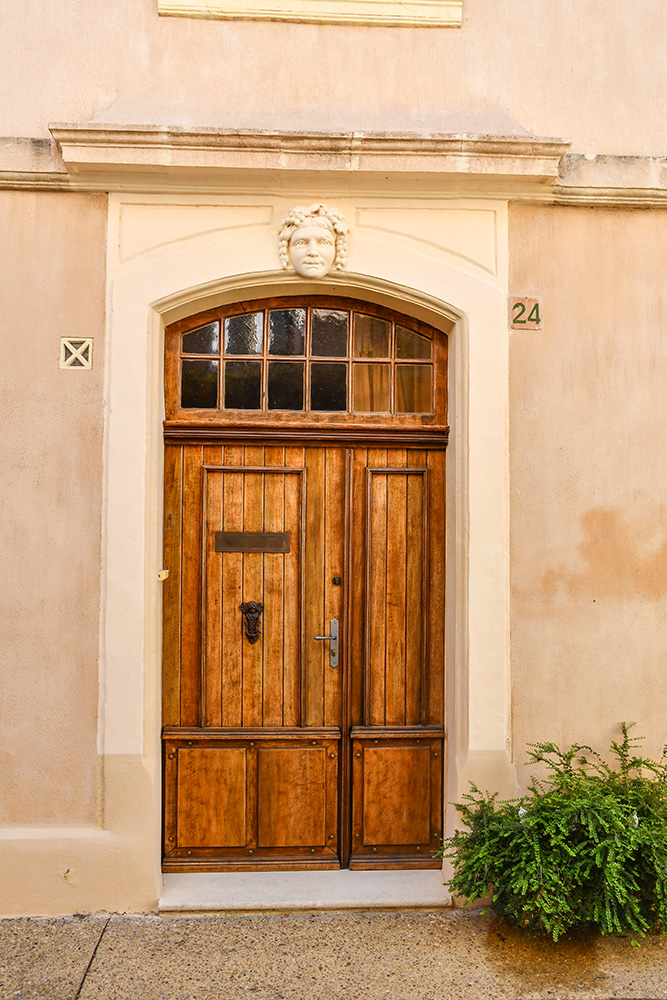
Doorway in Rue Pasteur © French Moments
Let's go down the next alley to the right to reach the Cours de la Liberté.

Fountain of Cours de la Liberté © French Moments
Cours de la Liberté
I really like the residential area of Cours de la Liberté with its fountain and terrace offering a magnificent view of the surrounding countryside and the Luberon.
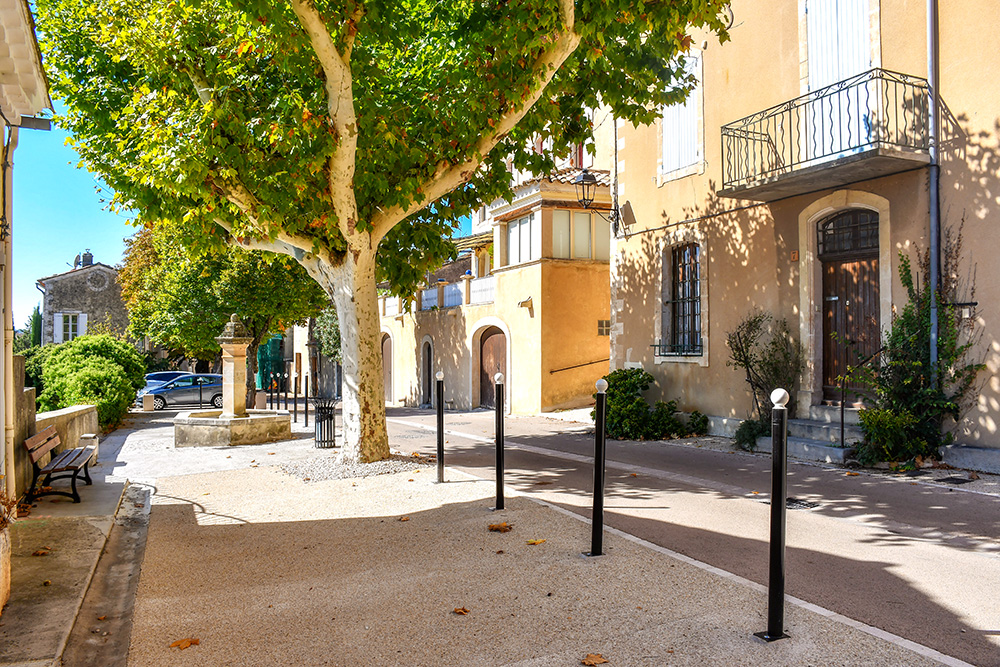
Cours de la Liberté © French Moments
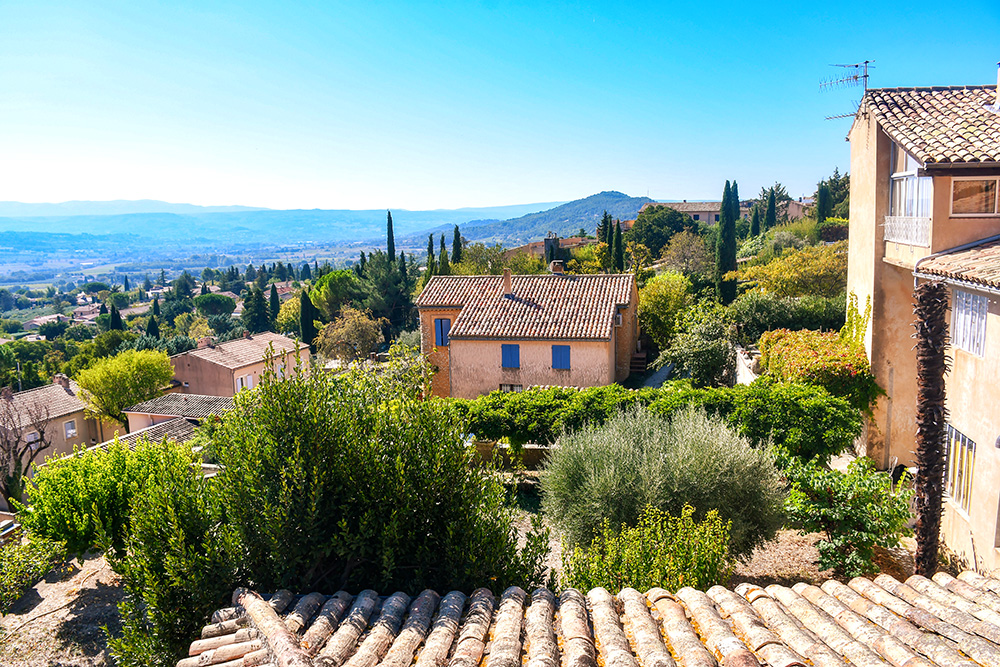
The view from the Cours de la Liberté © French Moments
You can see the chapel on the hilltop. We will climb up there later in our discovery of Saint-Saturnin-lès-Apt.
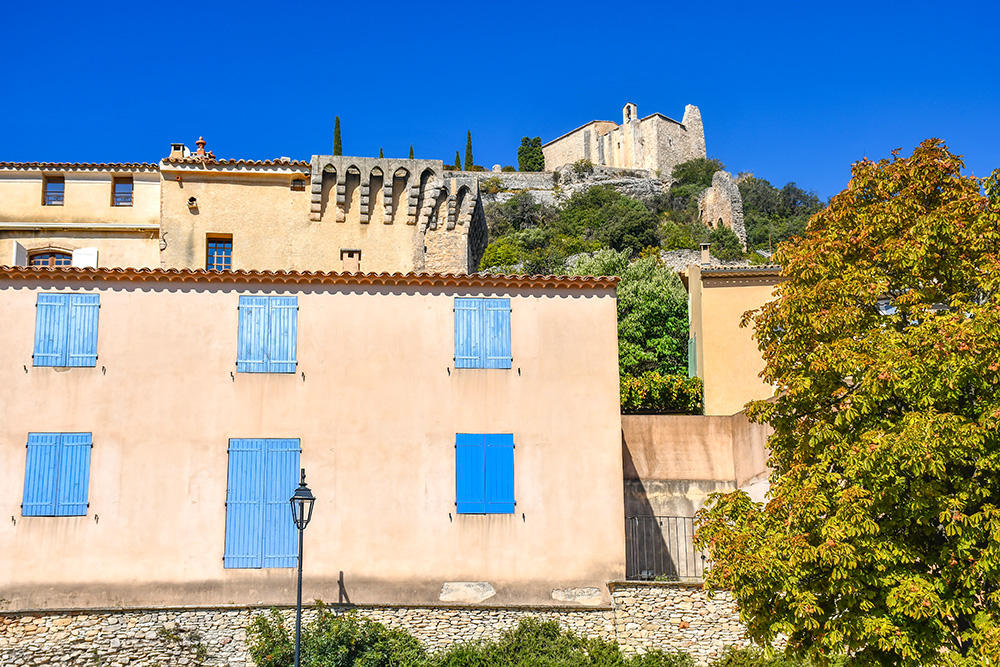
A view of the castle's chapel from the Cours de la Liberté © French Moments
Let's head back to the old village via the Rue de l'Oratoire.
Portail Aiguier
In front of us stands the old fortified gate of the village: the Portail Aiguier.
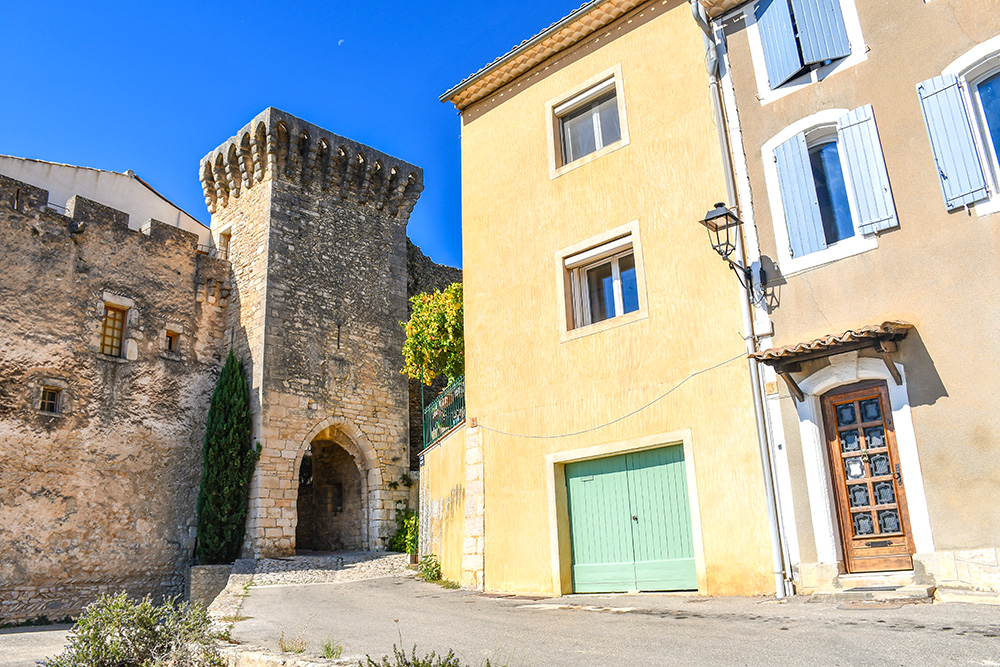
Portail Aiguier © French Moments
The town gate is topped by the corner tower of the 15th-century rampart.
The building also housed a well-cistern, which could explain its name; Aiguier derives from the Provençal word "aigo," meaning water.
This entrance to the village opened onto the Rue Droite – today the Rue du Théâtre – which was the high street of the village at the time.
Precisely, let's go through the gate to follow the Rue du Théâtre to the church.
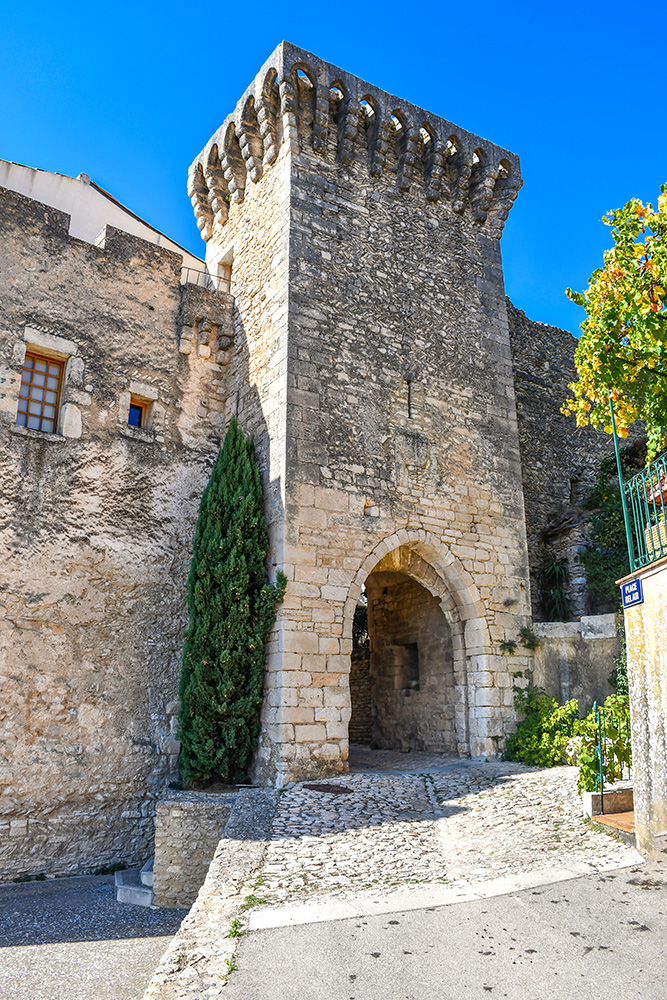
Portail Aiguier © French Moments
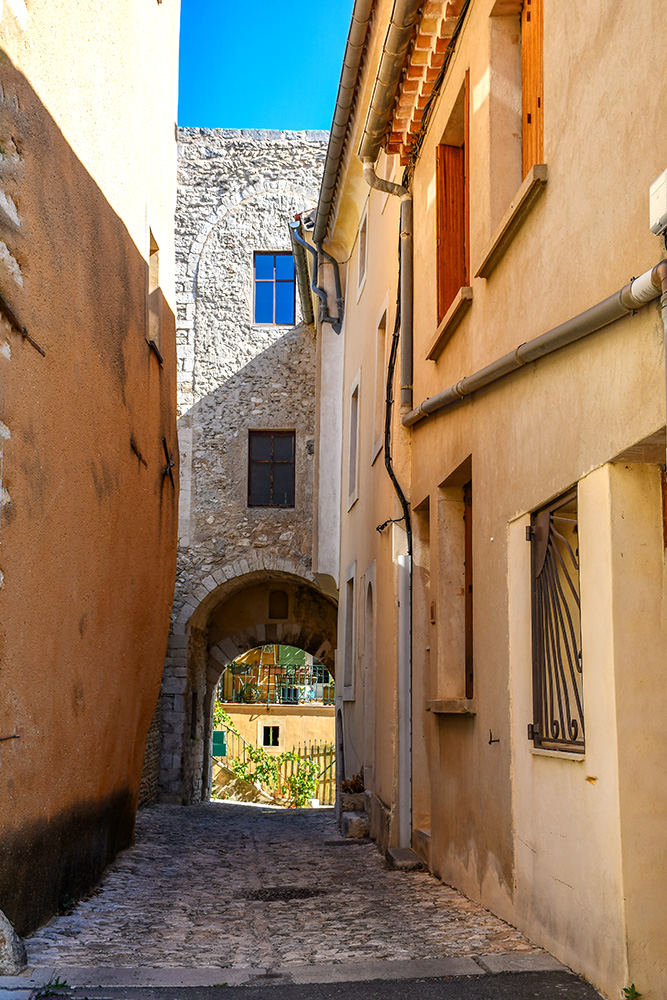
Rue du Théâtre and Portail Aiguier © French Moments
Rue du Théâtre and Rue de l'Horloge
The street of Rue du Théâtre looks much older than the 18th century with typical stone houses of a Provençal village.

Rue du Théâtre © French Moments
Observe the carriage doors, the Renaissance-style mullioned windows, and the beautiful dry stone walls.
You will reach the Placette fountain, dating back to 1853.

Placette Fountain © French Moments
We will return to this spot for our future climb to the castle’s chapel.
But for now, let's continue down the Rue de l’Horloge towards the church.
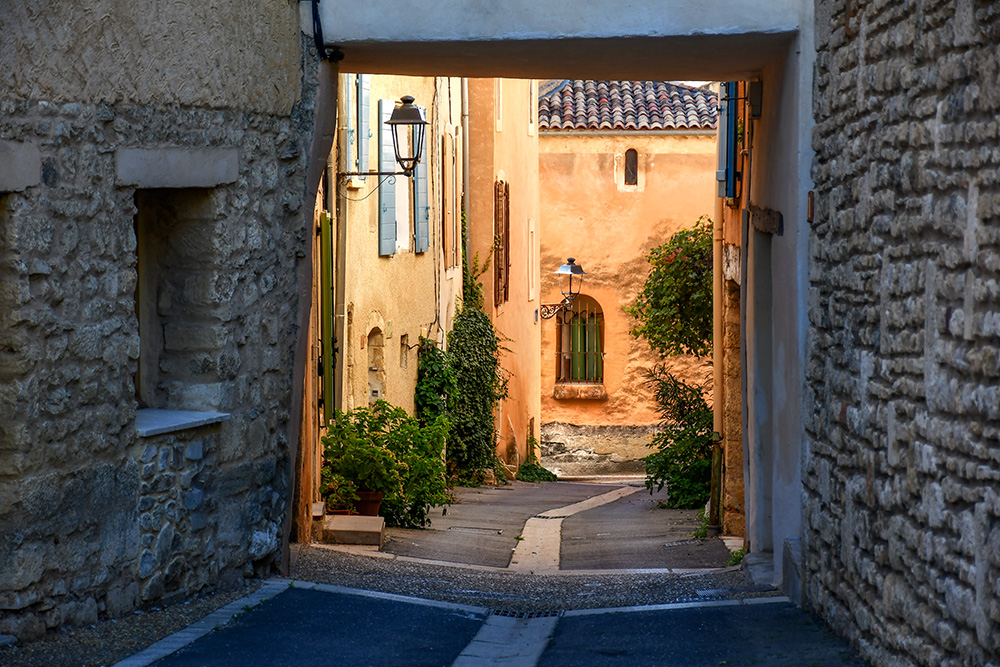
Rue de l'Horloge © French Moments
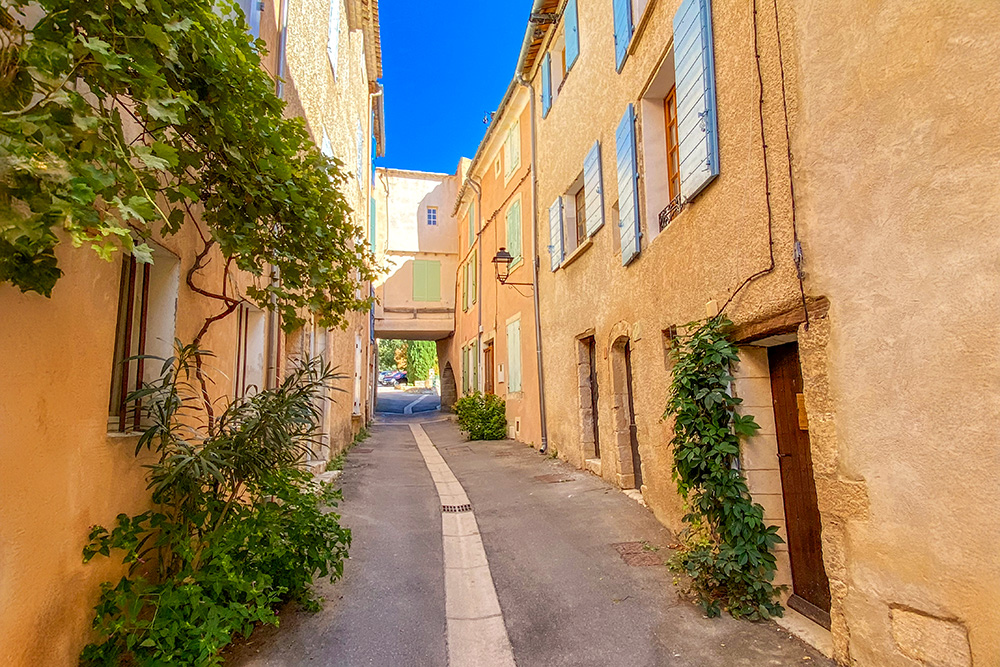
Rue de l'Horloge © French Moments
End of the Village Walk
At the end of the Rue de l'Horloge, you will arrive at the Place de la Mairie where we stood earlier.
Now, all we have to do is go down the Rue de la République again, giving us another chance to admire the beautiful doors of the 17th and 18th-century houses.
Let's take the Rue Albert Trouchet once more to return to our starting point, the Place Gambetta.
We have finished our tour of the old village of Saint-Saturnin-lès-Apt, and I invite you to set off for a walk on the castrum rock, then to the mills by the dam before descending back to the village.
Lunch Break in Saint-Saturnin-lès-Apt
One of our most unforgettable experiences in Saint-Saturnin-lès-Apt was dining at the restaurant of the Hôtel-Restaurant des Voyageurs.
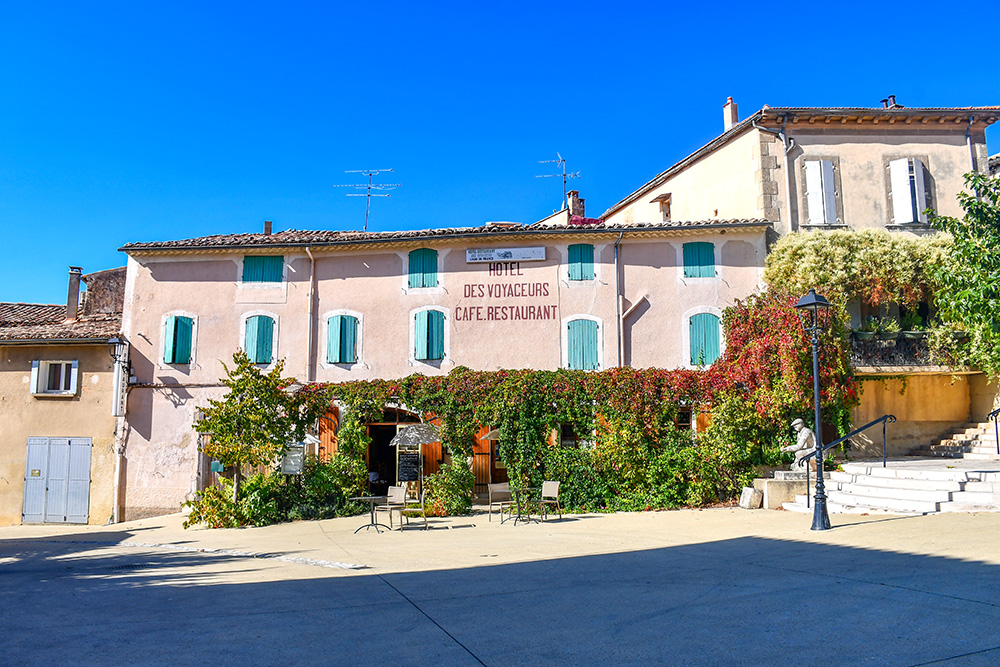
We were warmly welcomed by the friendly owner, whose hospitality made us feel right at home.
We enjoyed our meals so much that we returned twice during our stay.
Comfortably seated at a table on the restaurant's terrace, shaded by lush Virginia creeper, we relished the delightful ambiance at the edge of Place Gambetta.
The Chef delighted us with seasonal specialties that showcased local produce, offering a cuisine rich with the aromas of Provence.
Indeed, the food was exceptional, each dish a testament to the rich flavours and culinary traditions of the region, making our dining experience truly memorable. We highly recommend it!
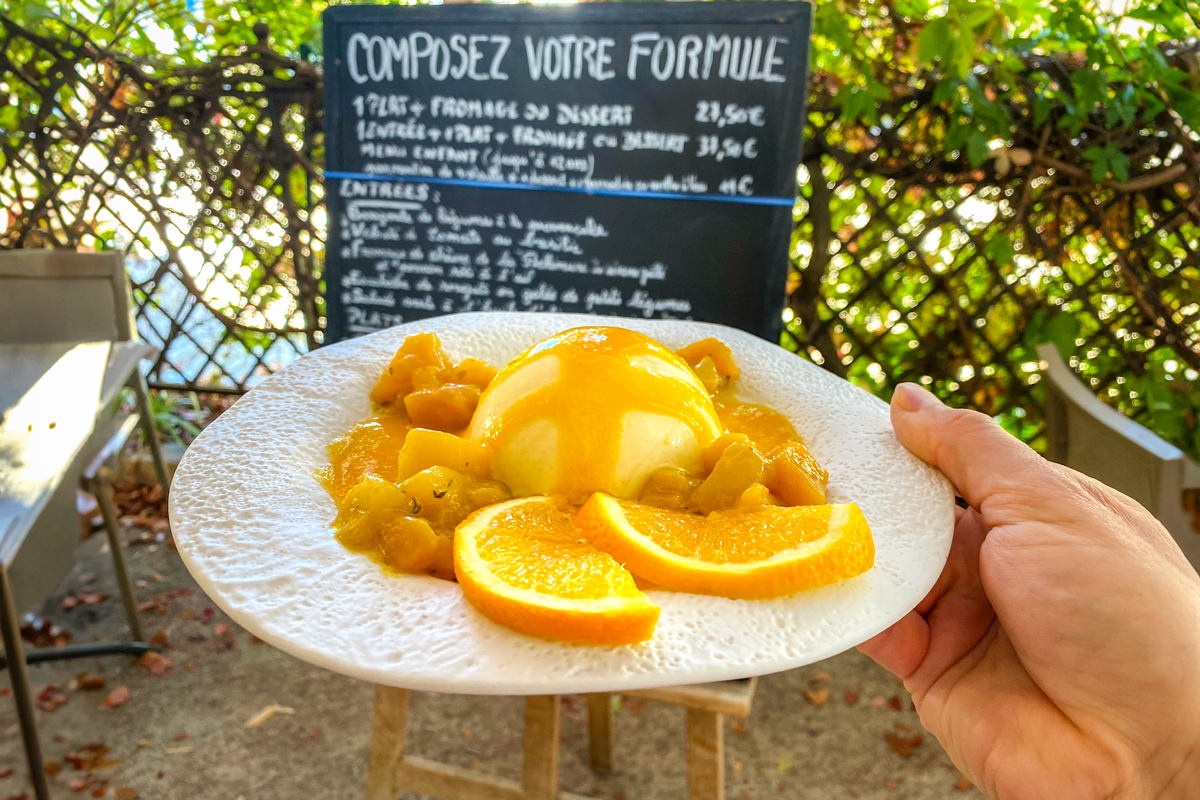
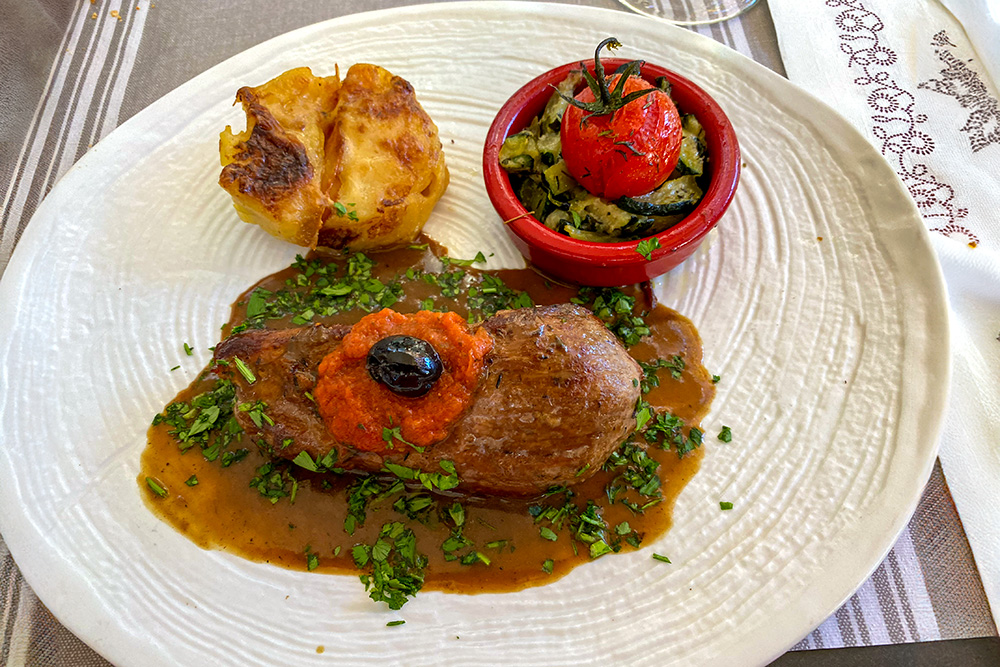
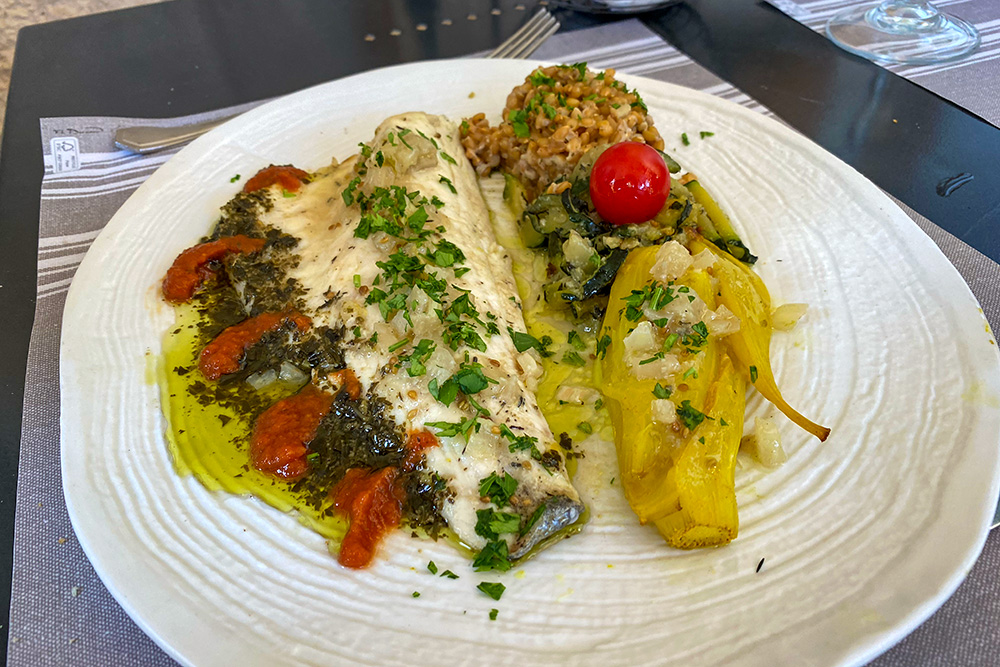
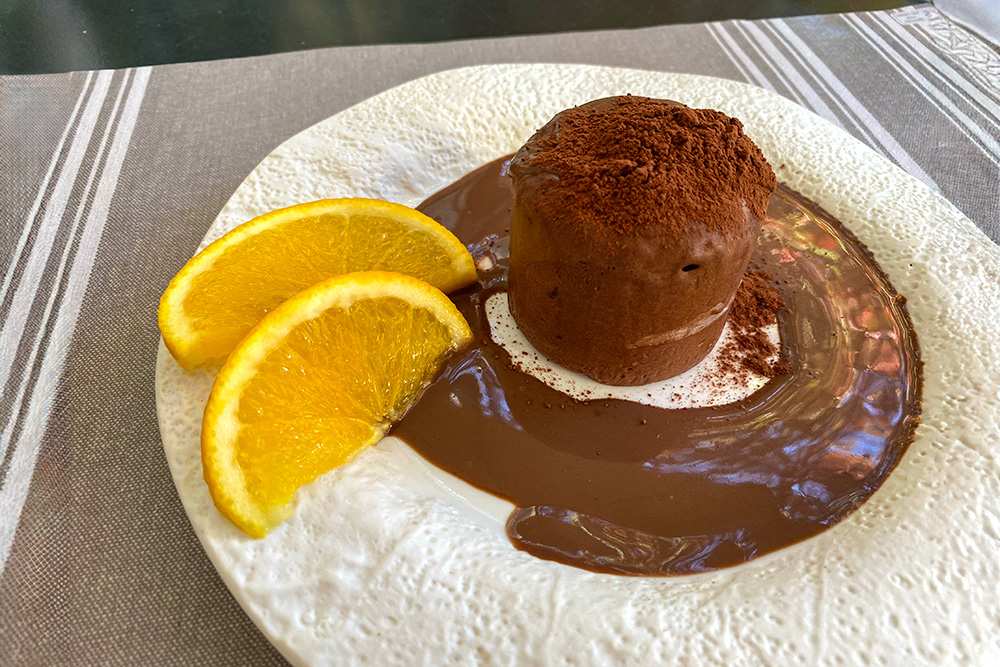
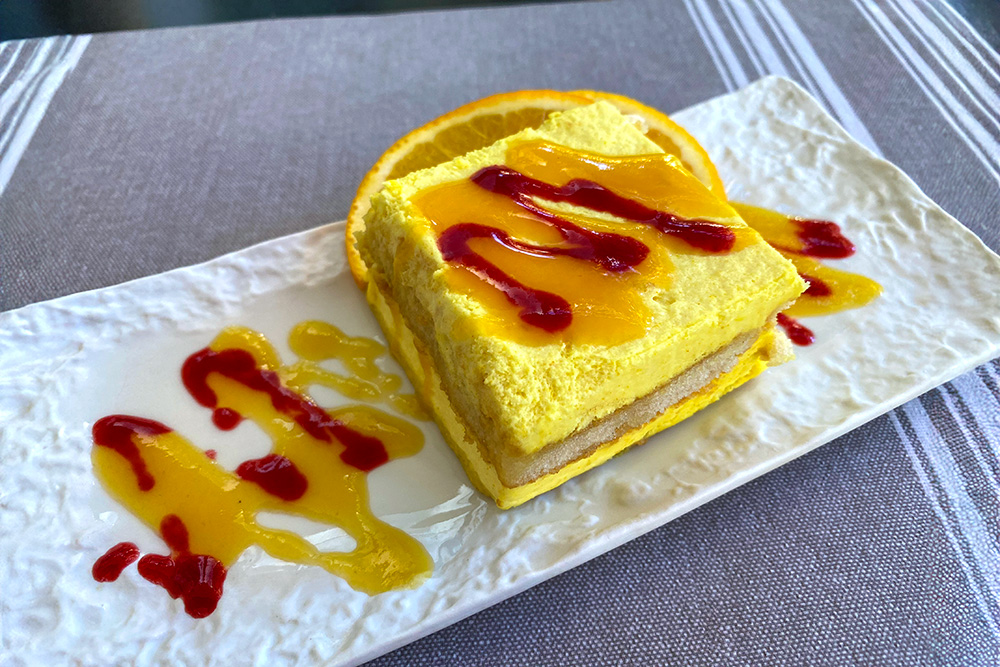
Restaurant opening times: 12 noon to 1.30pm and 7.30pm to 9pm
Closed: Wednesdays all day and Thursdays until 6pm.
Annual closing: February
More info: check out the restaurant's website!
The Castle Rock and Windmill Walk
For our hike on the heights of Saint-Saturnin-lès-Apt, we will start at the Placette fountain at the intersection of the Rue de l’Horloge and the Rue des Pénitents.
Chemin de Basse Roque
On the left are the remnants of a wine vat, the village’s first communal oven, and traces of dwellings and small shops.
The communal oven was a wood-fired oven provided by the lord, who collected a fee for each use.
The climb to the castrum rock is for those who are not discouraged by a bit of a hike, especially in the full sun.
We now follow the Chemin de Basse Roque.
Chapel of the White Penitents
Here is the ruin of the chapel of the White Penitents.
Only the apse of the chapel remains.
It is likely that its construction dates back to the 15th century.
It was supposedly restored two centuries later but was abandoned around 1900 as it threatened to collapse.
It was in this chapel that the first municipal and cantonal elections of Saint-Saturnin-lès-Apt were held in 1790.
Viramont Gate
Let's go through the Porte de Viramont to enter the Castrum domain.
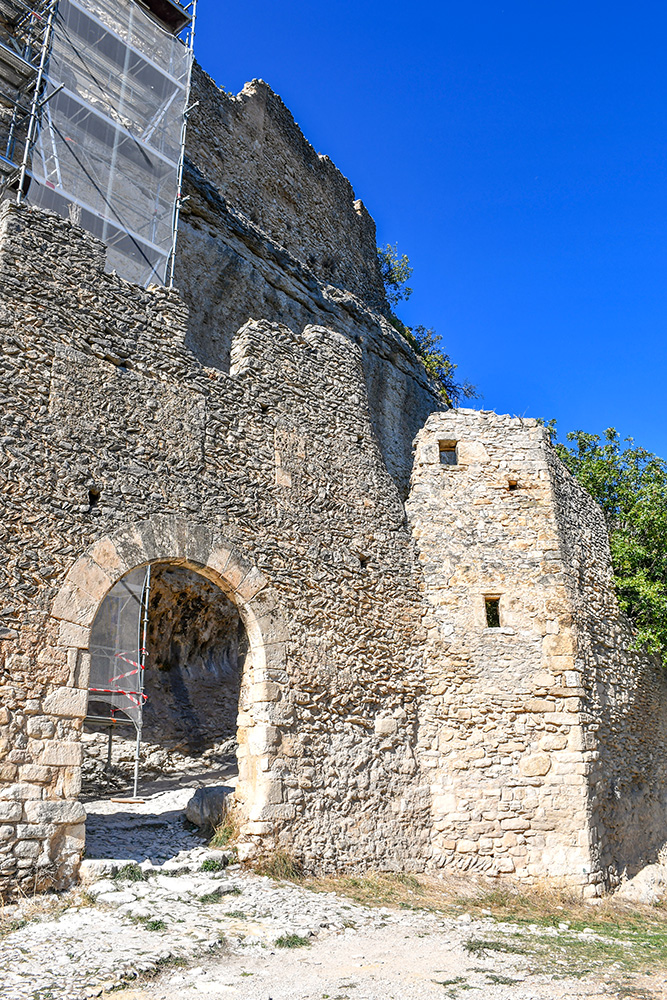
Porte de Viramont © French Moments
In the 12th century, houses were built to the southeast in this Basse Roque area, necessitating the enlargement of the walls and the addition of new gates.
These were the Porte de Viramont downstream and the Porte de Rome upstream.
The Castle's Chapel
After a uphill walk you will reach the site of the castle’s chapel at the top of the rocky outcrop.
But before reaching the chapel, let's take a look at a small sepulchral cave, closed by an iron fence.
It houses a reclining statue that was added in the 19th century.

The sepulchral cave © French Moments
This sanctuary was built in the 11th and 12th centuries on the remains of a Roman building and a 6th-century Paleo-Christian church.
Romanesque in style, it initially occupied only part of the castle’s keep.
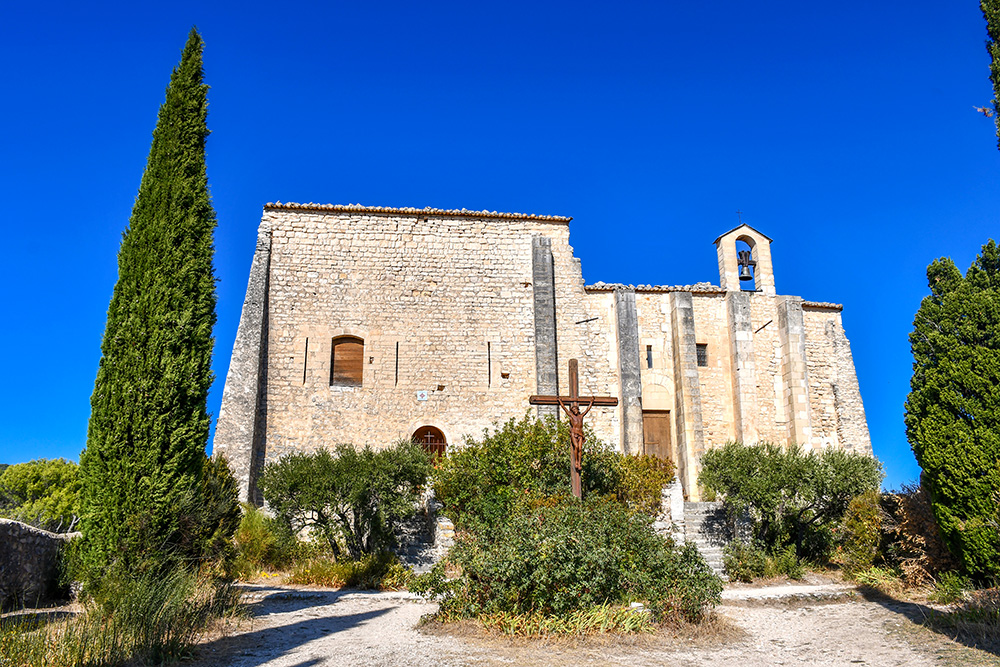
The Castle's Chapel © French Moments
The chapel was consecrated as a parish church in 1056 by three bishops.
But in 1306, it lost this status and began to deteriorate.
At the end of the 17th century, the White Penitents ensured its preservation.
It was thus extended to encompass the entire keep and equipped with a bell, a pulpit, and a gallery.
It was restored for worship in 1671 and served as an infirmary and quarantine during the plague of 1720.
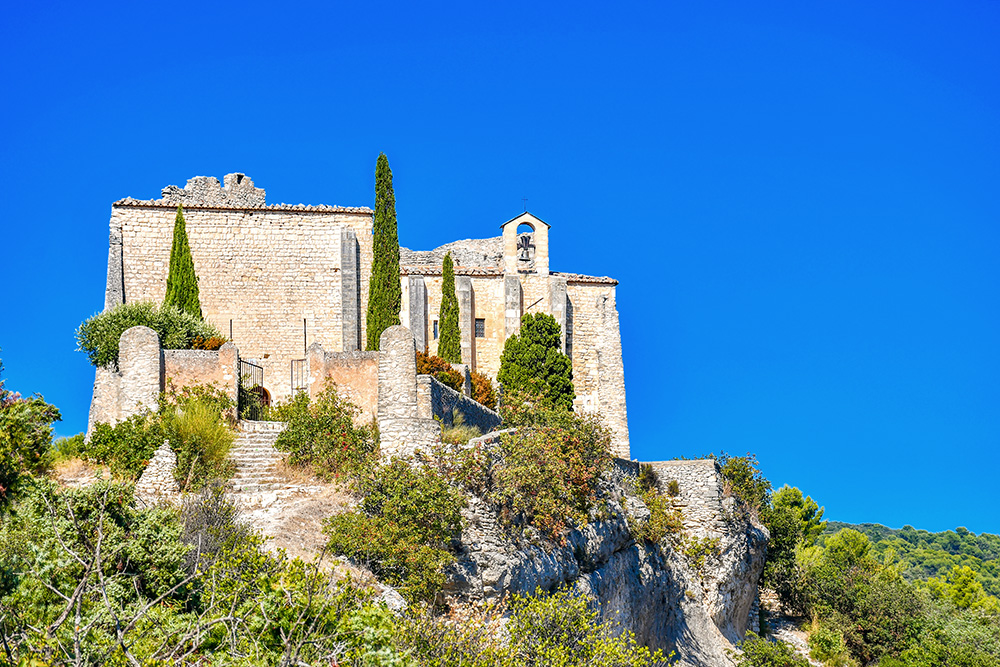
The Castle's Chapel © French Moments
The View from the top!
We now follow the crest of the rocky spur between the village and the old dam.
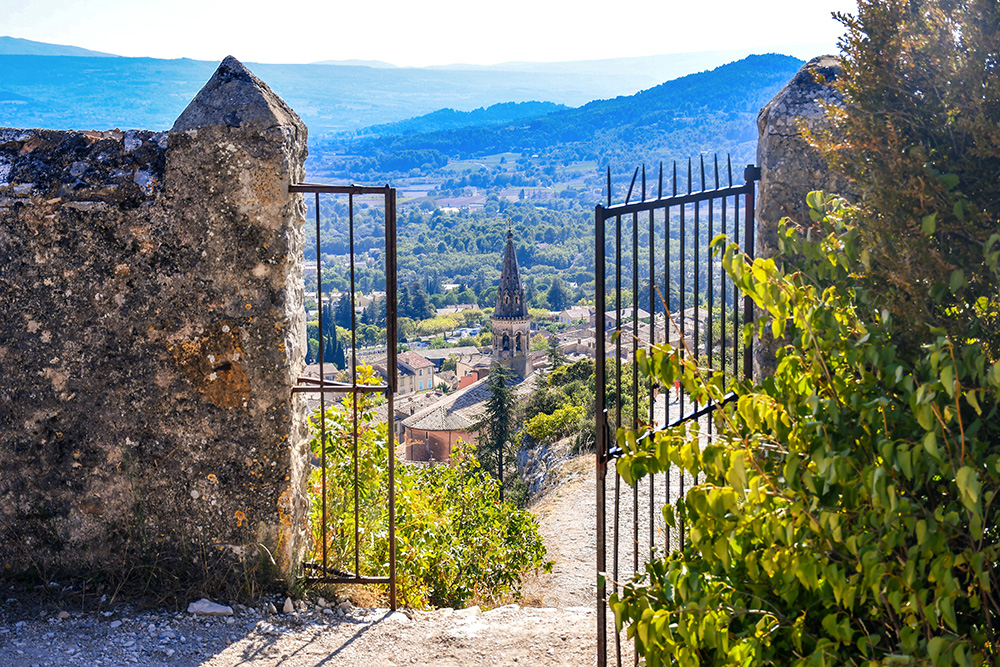
In the Castrum of Saint-Saturnin © French Moments
It is a spectacular site that I did not expect to discover.
We enjoy uninterrupted views of the village of Saint-Saturnin, the plain, and the Luberon mountain.
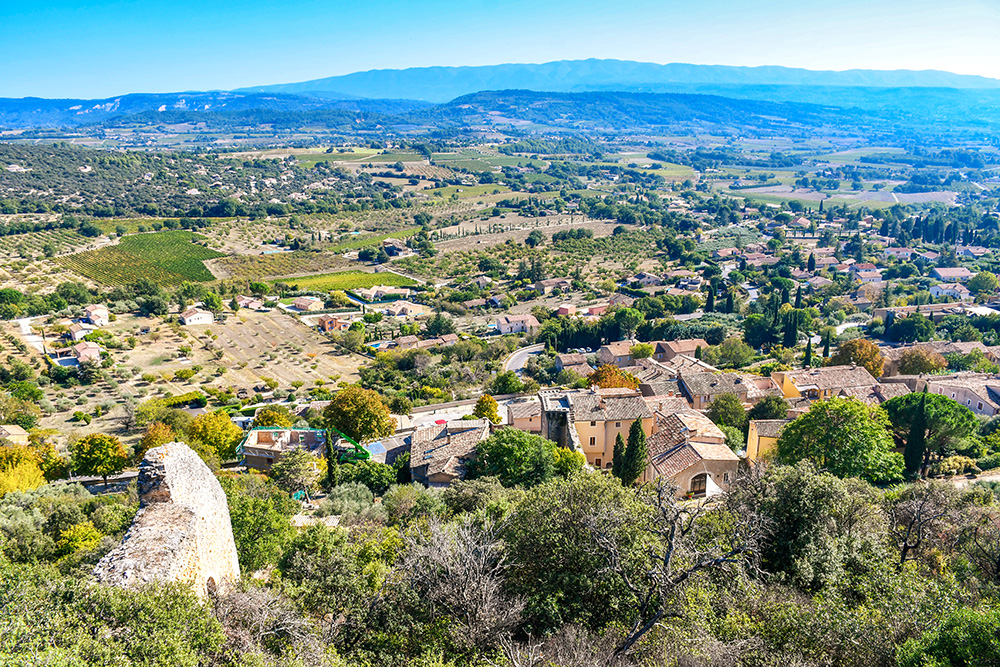
Saint-Saturnin-lès-Apt © French Moments
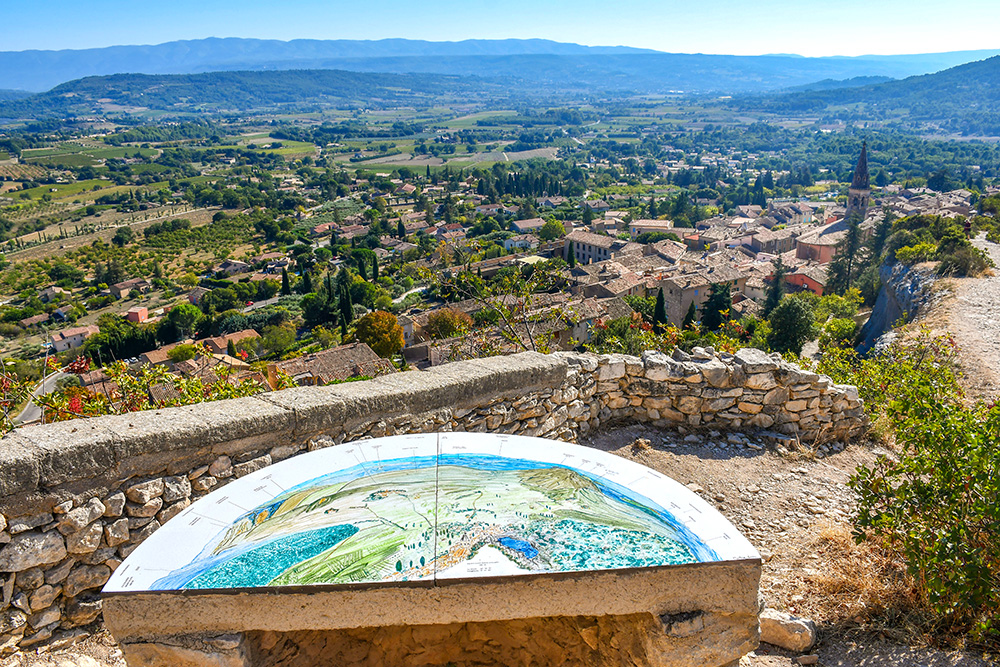
The Orientation Table © French Moments
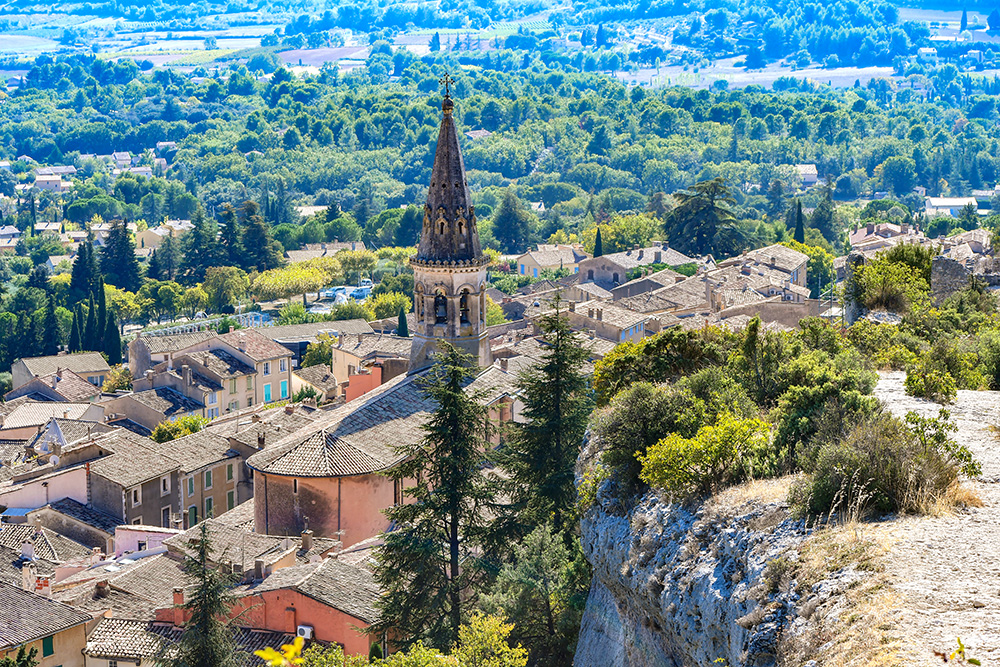
Saint-Saturnin-lès-Apt © French Moments
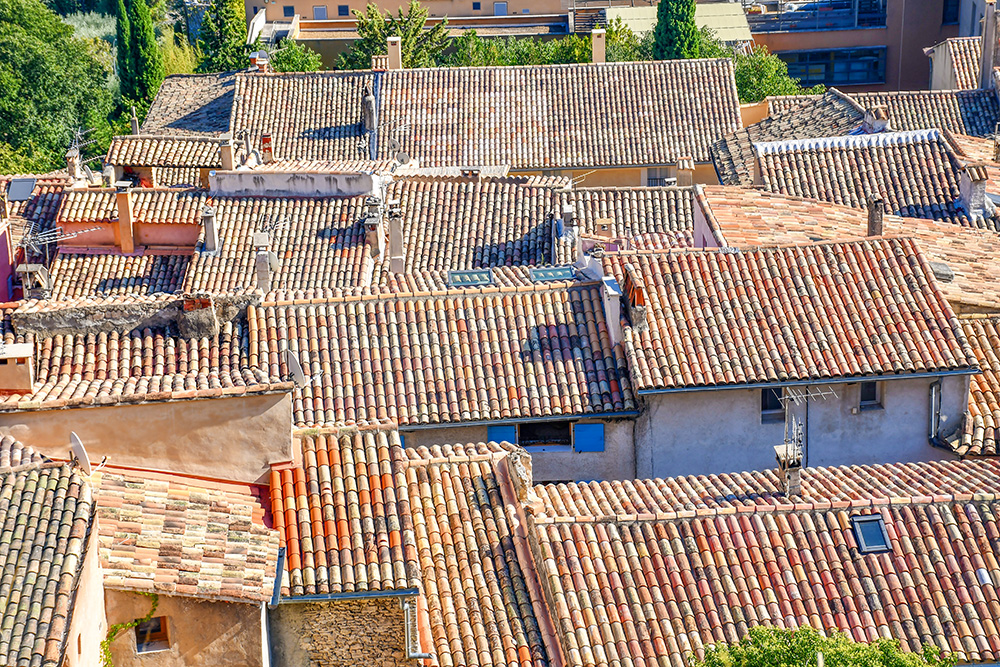
Rooftops of Saint-Saturnin-lès-Apt © French Moments
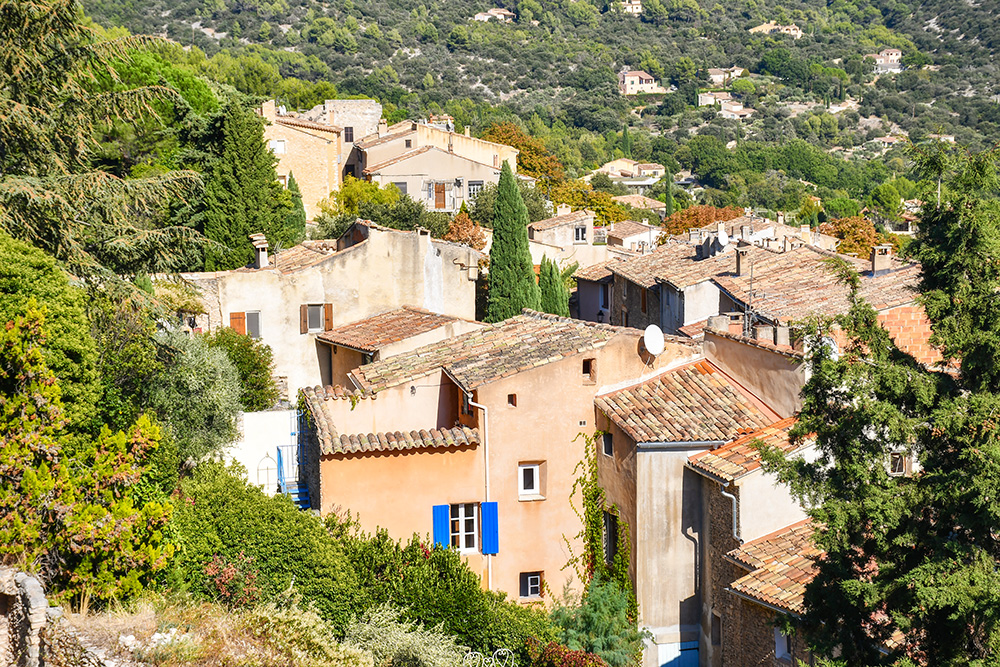
Saint-Saturnin-lès-Apt © French Moments
The ruined village
Shortly after, we arrive at the ruins of the old village.

The ruins of the old village © French Moments
There is the Porte de Rome, which opens the way to the Chemin de Basse Roque that we took to climb to the chapel from the village.
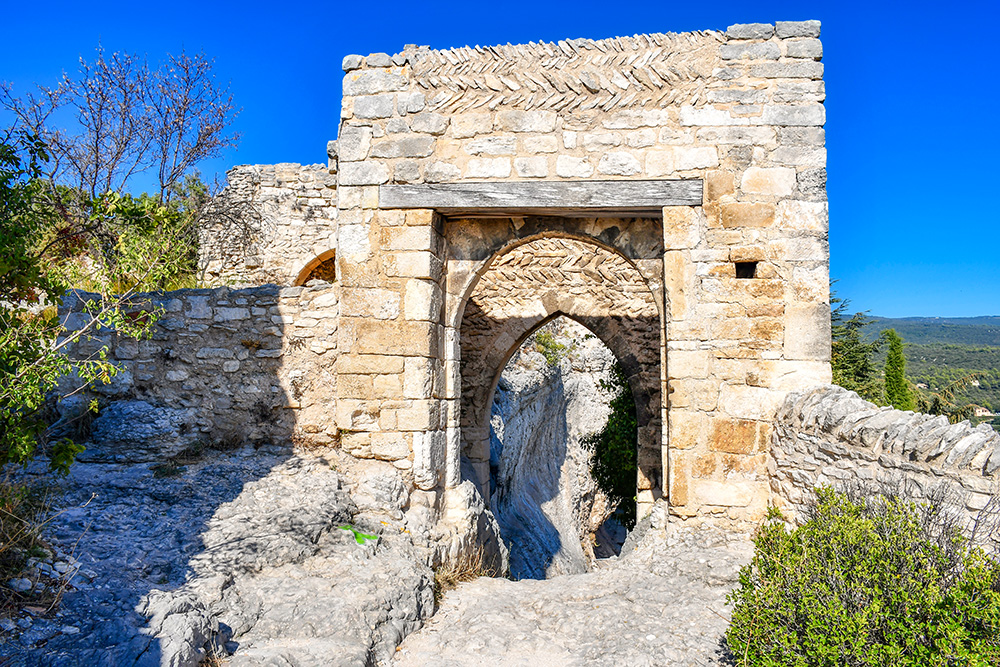
Porte de Rome © French Moments
The Dam
We now arrive at the dam. This is another unusual site to discover in Saint-Saturnin.
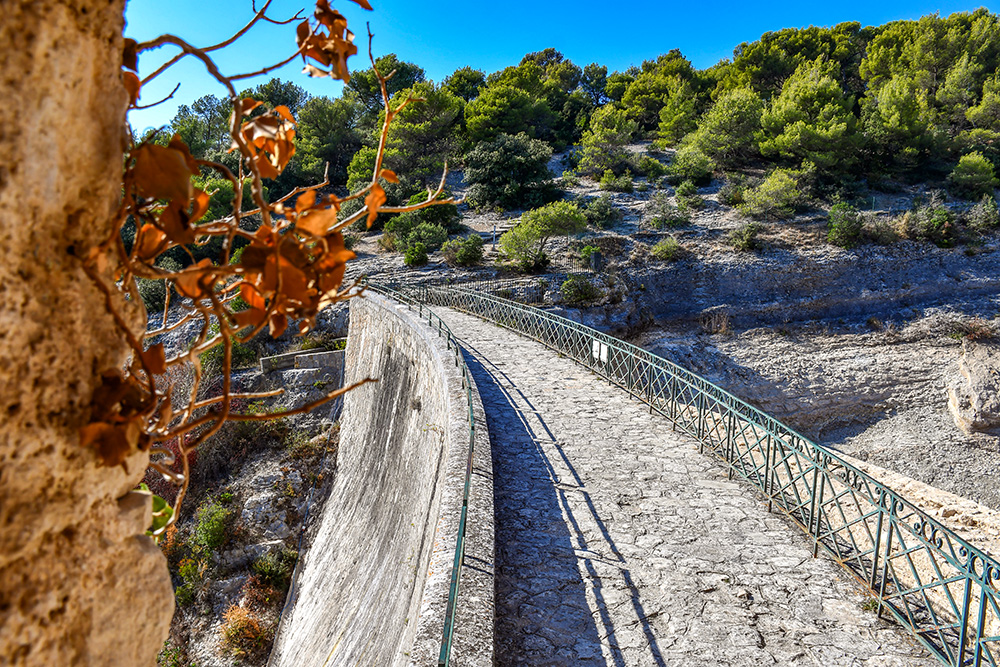
The Dam of Saint-Saturnin-lès-Apt © French Moments
Unfortunately, it was empty during my visit.
The dam dates back to 1763 and supplied water to the Matheron fountain located near the church.
Then, after two overflows in 1780 and 1835, the reservoir was raised and reinforced.
Deemed dangerous, this dam was doubled in 1902 by a second 14-metre dam, built immediately downstream.
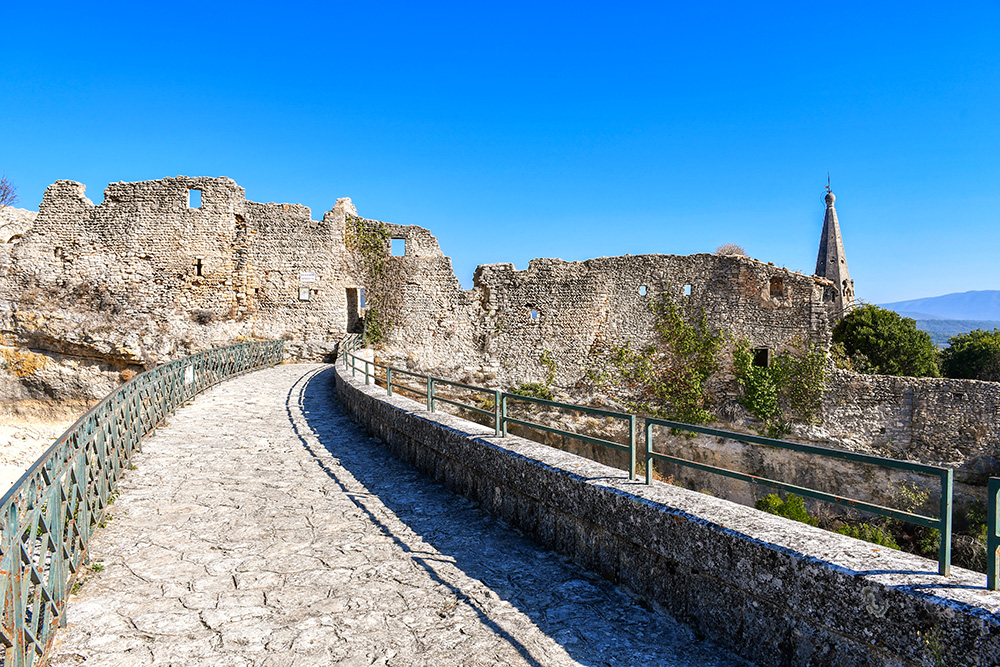
On the Dam of Saint-Saturnin-lès-Apt © French Moments
With a capacity of 2,200 m3, this dam supplied most of the cisterns, fountains, and washhouses in Saint-Saturnin until the arrival of potable water networks in 1953.

The Dam of Saint-Saturnin-lès-Apt © French Moments
We will now head to the mill by walking through the forest and the garrigue.
The Windmills of Saint-Saturnin
Only two of the four mills that produced flour in Saint-Saturnin have survived.

The Windmill of Saint-Saturnin-lès-Apt © French Moments
The first mill no longer has its sails.
But the second has been restored and has become one of the symbols of Saint-Saturnin.
The 18th-century mill is the archetype of the Provençal mill, with its recessed roof offering little grip to the mistral.
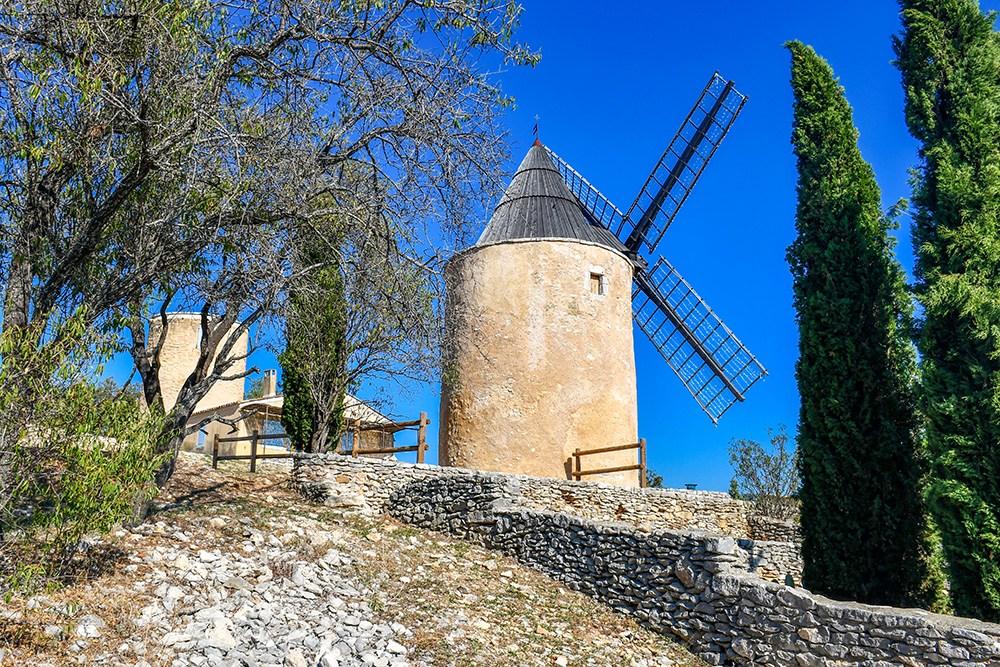
The Windmill of Saint-Saturnin-lès-Apt © French Moments
Around the restored mill, there was a tiled area for threshing and drying the grain.
From the mill, there is a superb panoramic view of the Luberon and the Apt basin.
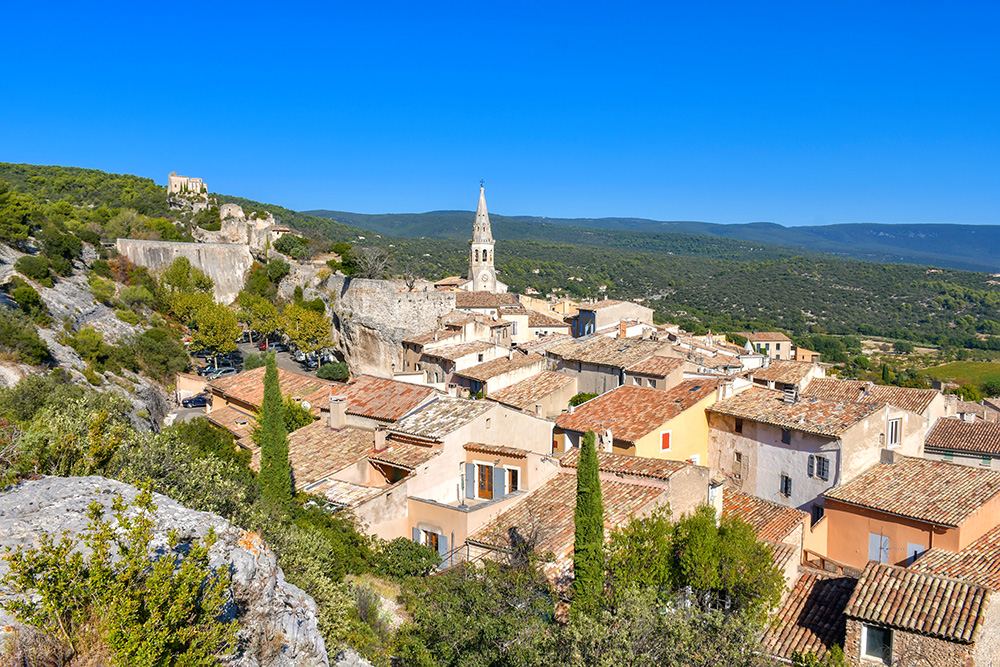
The view of Saint-Saturnin-lès-Apt from the windmill © French Moments
End of the Walk by the Calade
Let's head back down to the village via the calade.
The calades are steep streets or paths paved with stones found in Provence.
This flooring made walking easier for men and animals and limited erosion from torrential rains.
At the bottom, we are in the old village, on the Rue de la Combe.
Turn right to reach the Place de la Fraternité and its fountain. Then, go up the square and take the Rue Albert Trouchet to reach the Place Gambetta.
Find out more
Here are some pages from our blog and other websites to find out more about this Provencal destination.
- Discover the hilltop villages of the Luberon
- Explore the neighbouring villages of Joucas and Gordes
- Find out more about Provence-Alpes-Côte d'Azur
- The official tourist office of the area
Where to stay near Saint-Saturnin-lès-Apt
Saint-Saturnin-lès-Apt and surroundings have a high capacity for holiday accommodation. The commune and its surroundings has hotels, bed and breakfasts (covering all price ranges), estate agencies offering seasonal rentals and gîtes.
Click here to book your accommodation in the Luberon or browse the map below:
What to do in the Luberon
Be inspired by a list of things to do in the Luberon:
Pin Saint-Saturnin-lès-Apt on Pinterest





